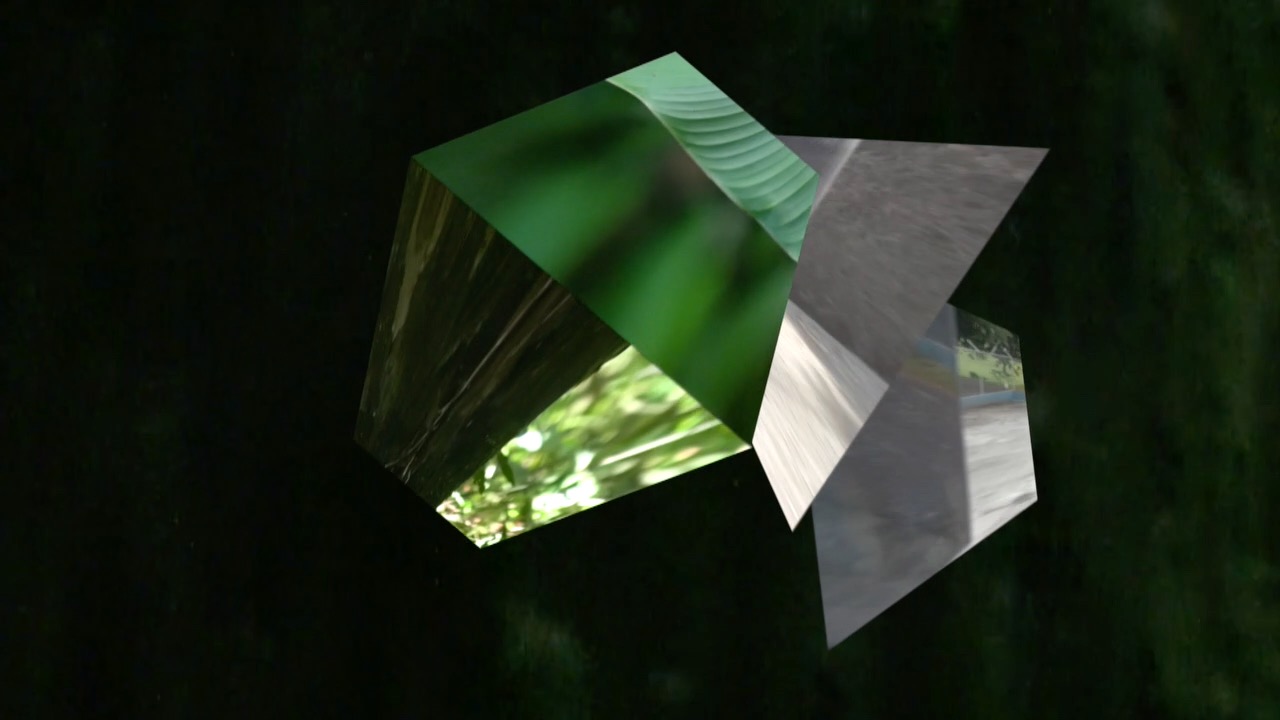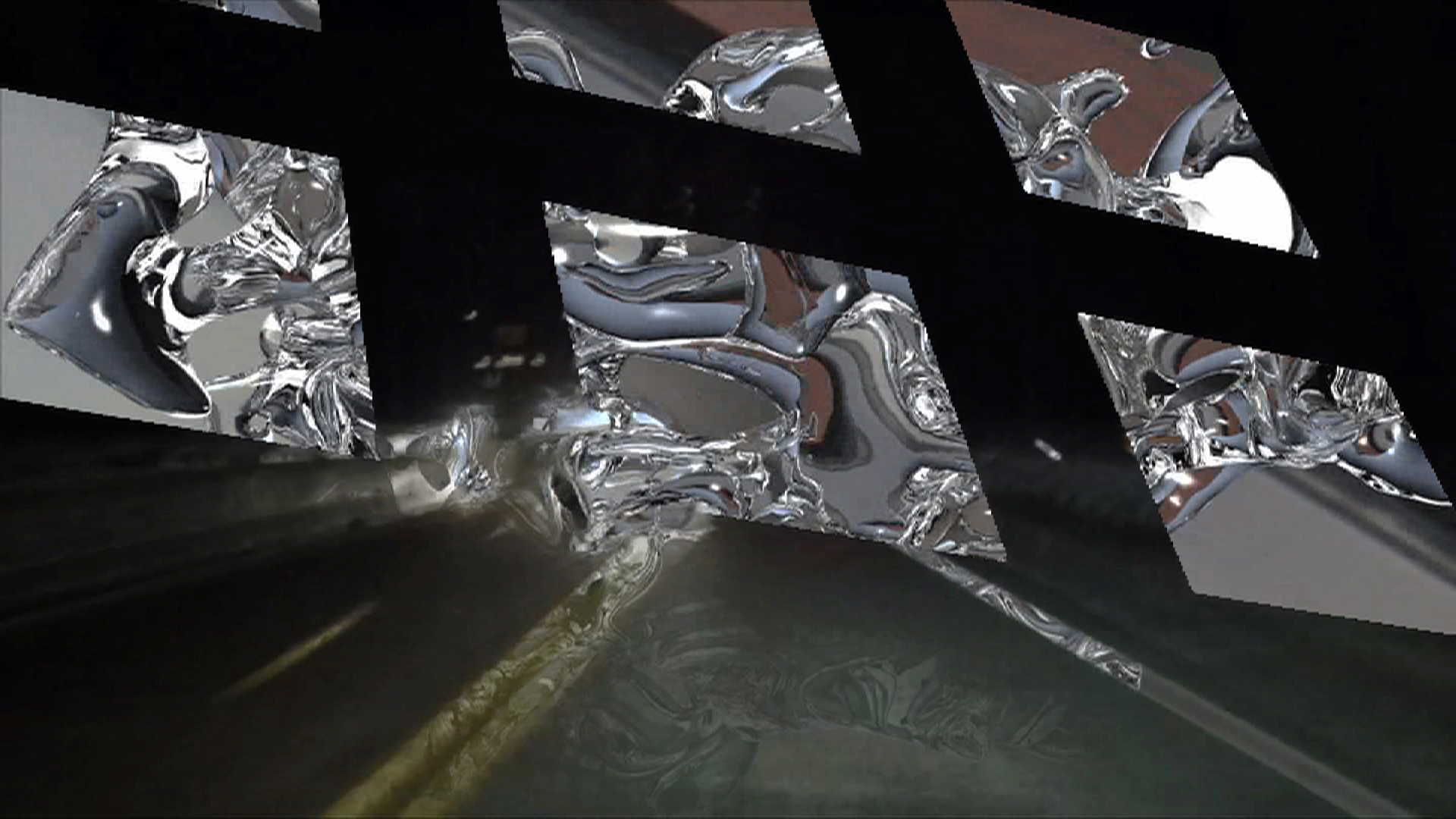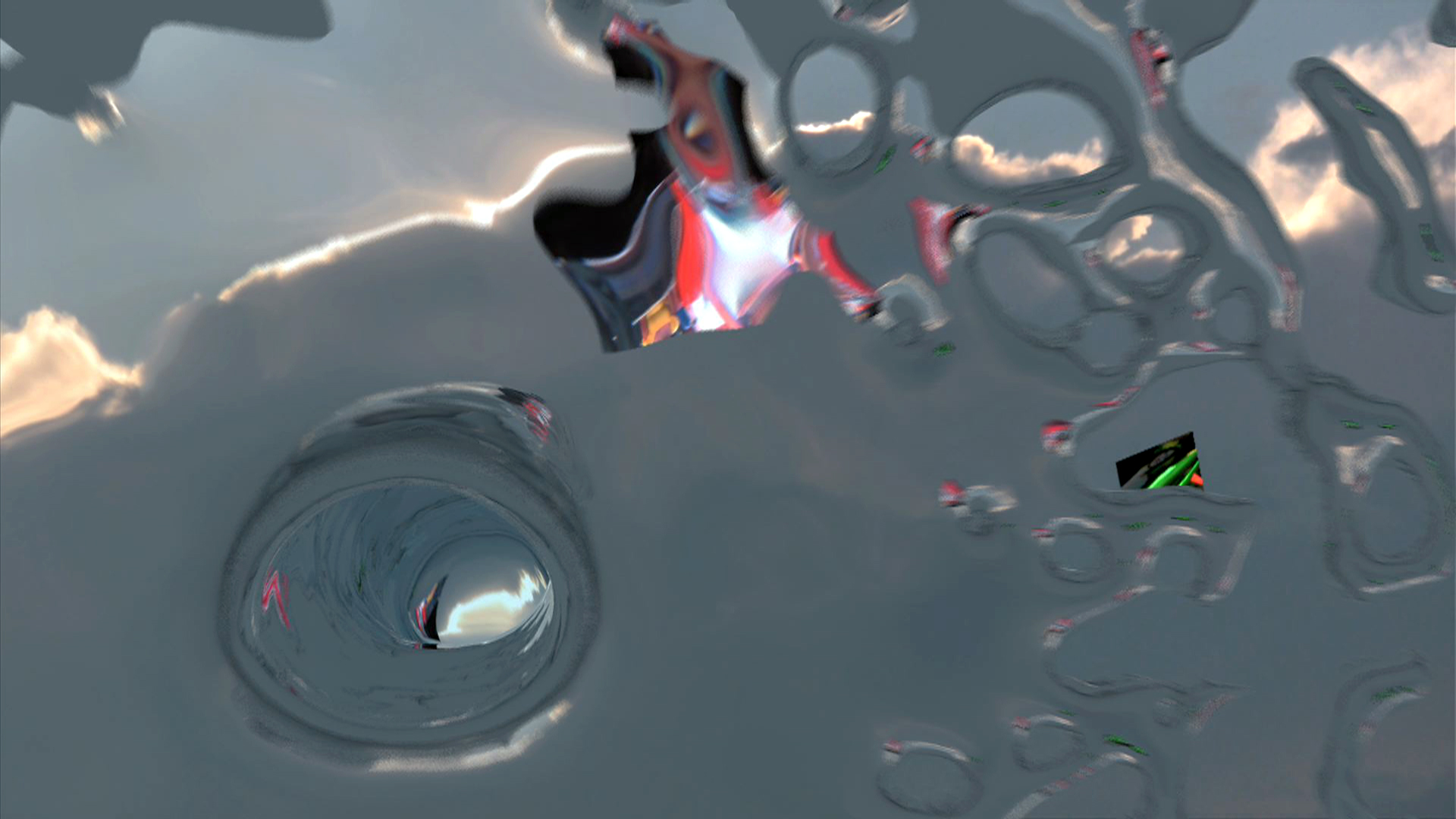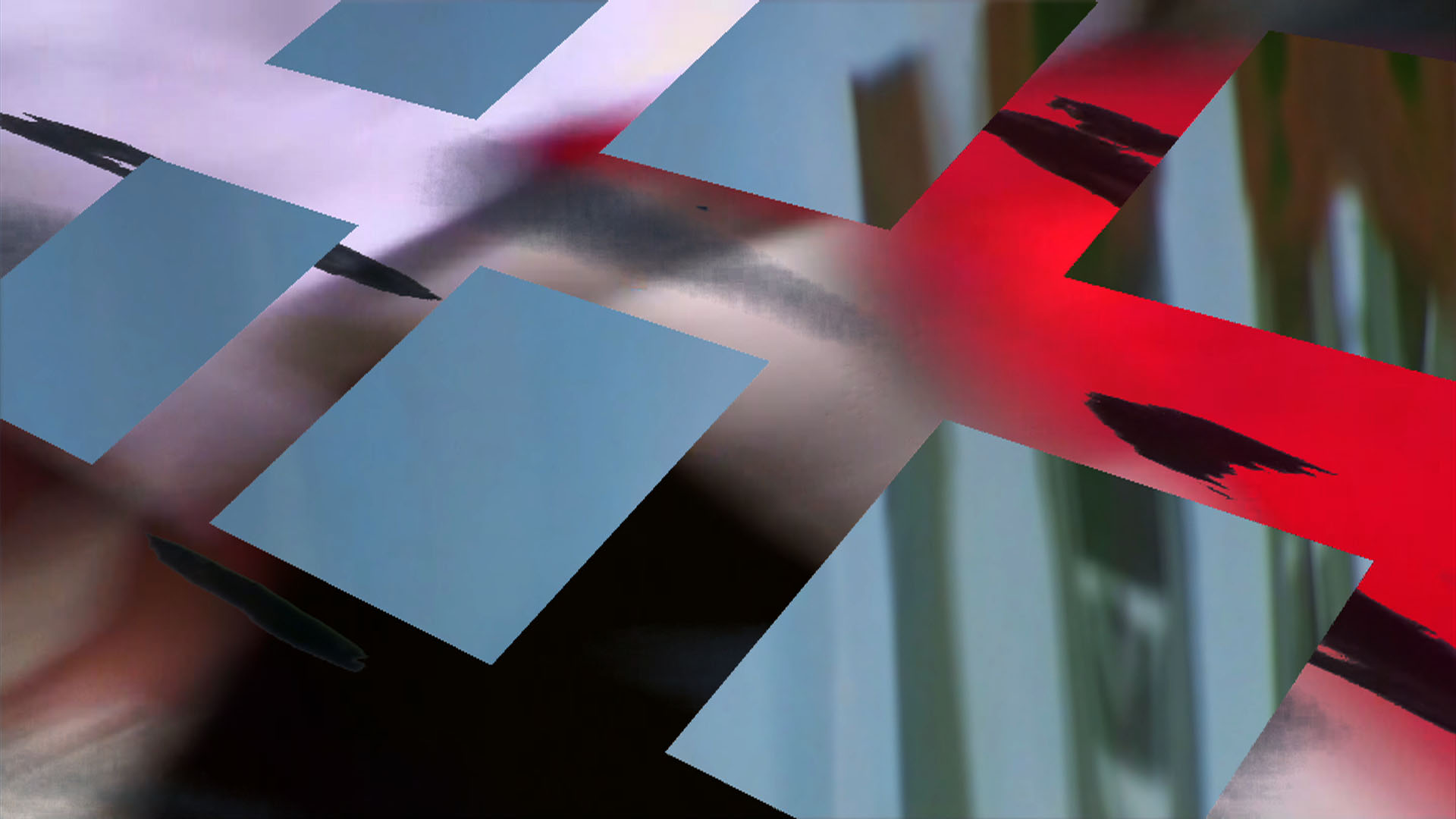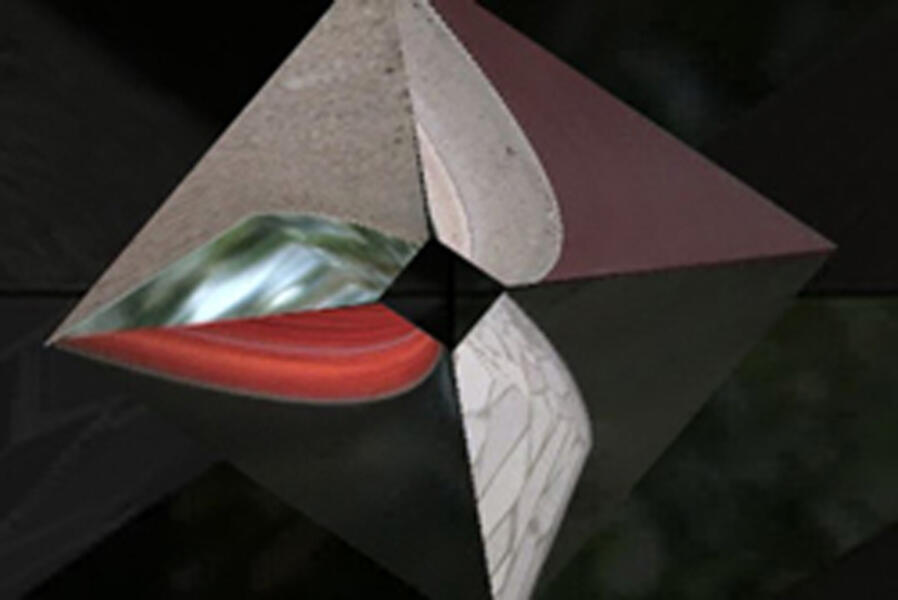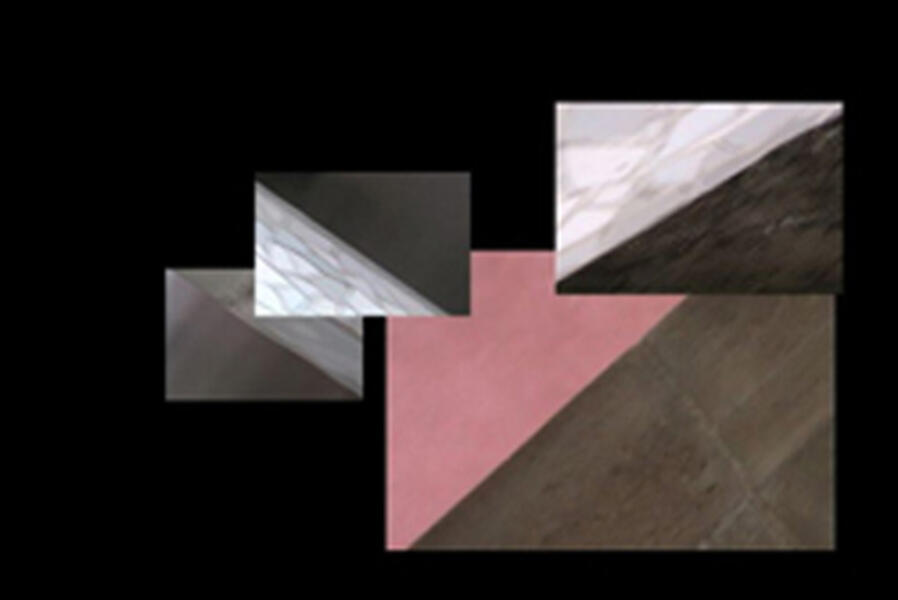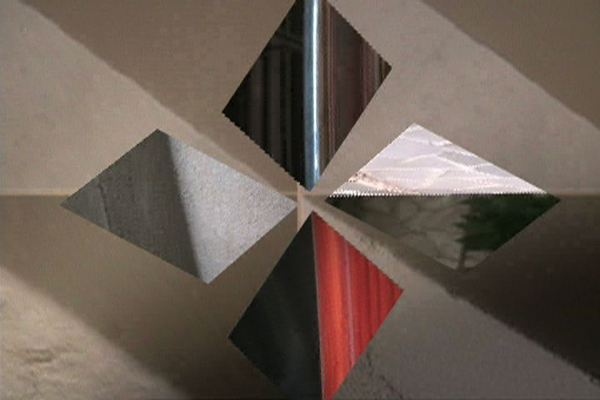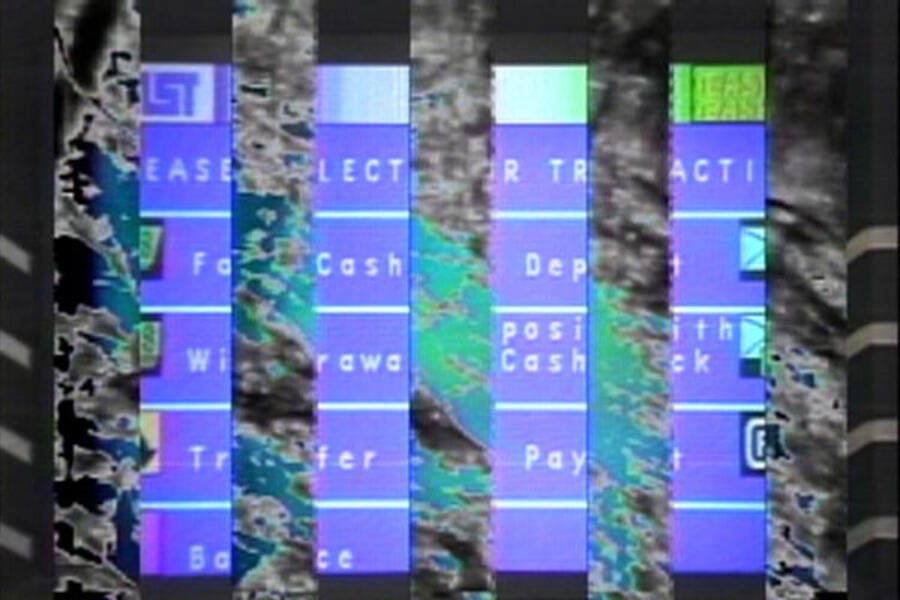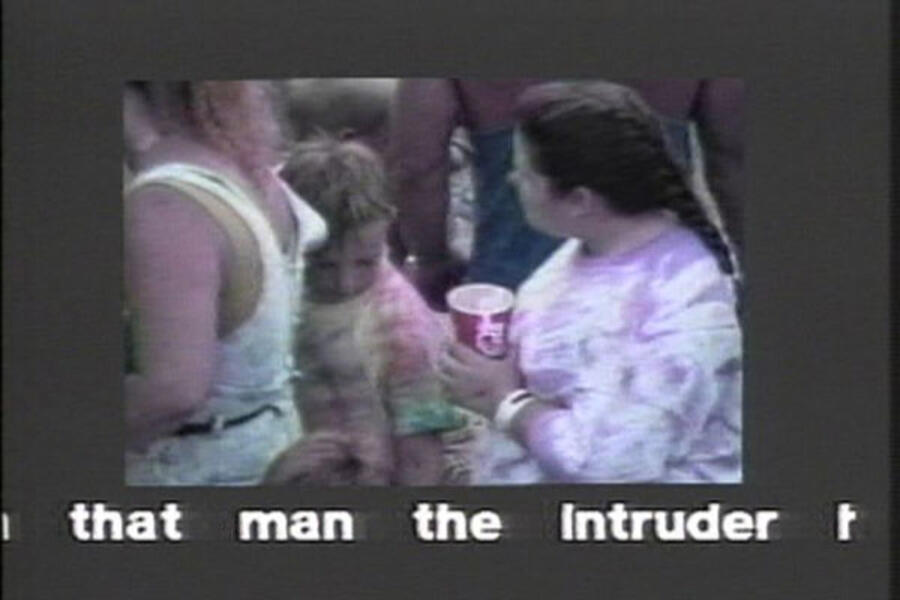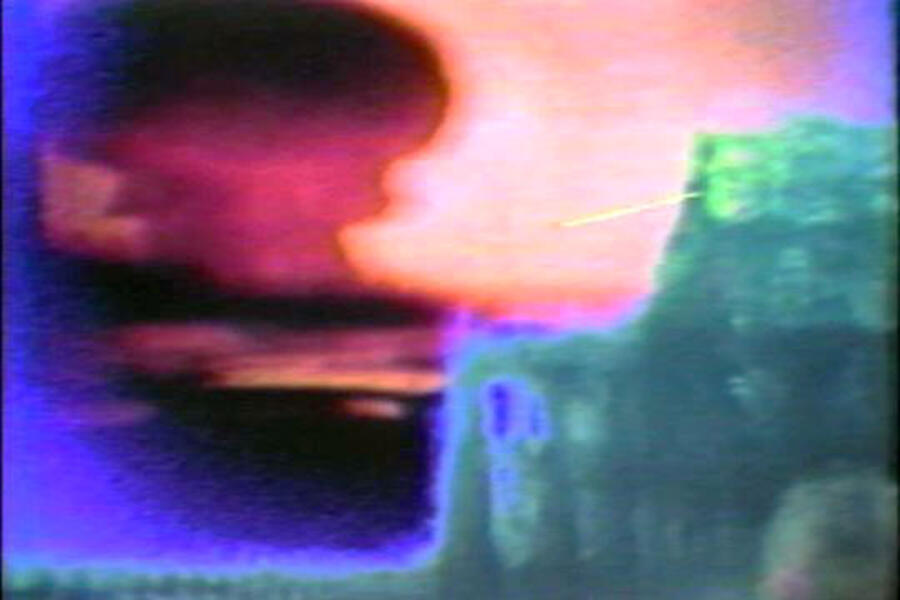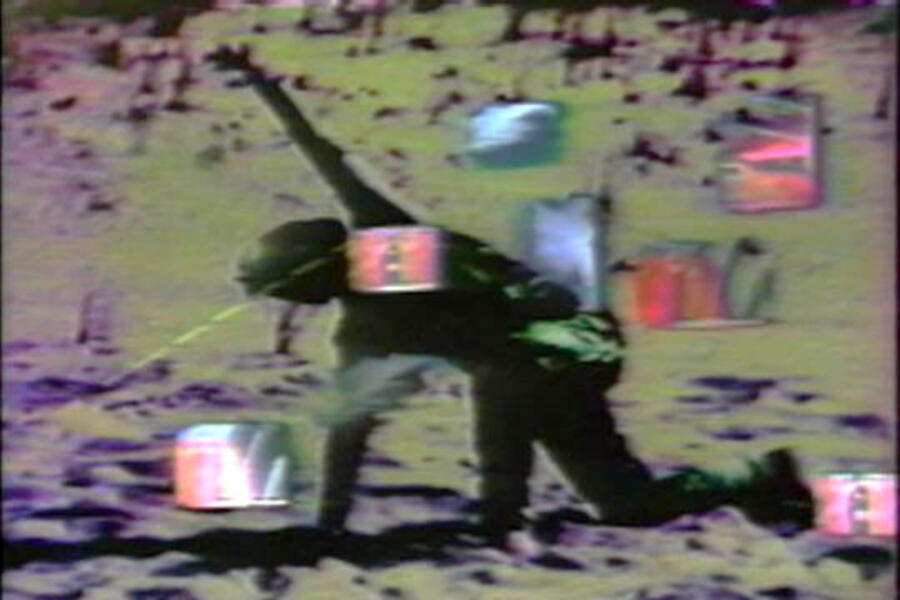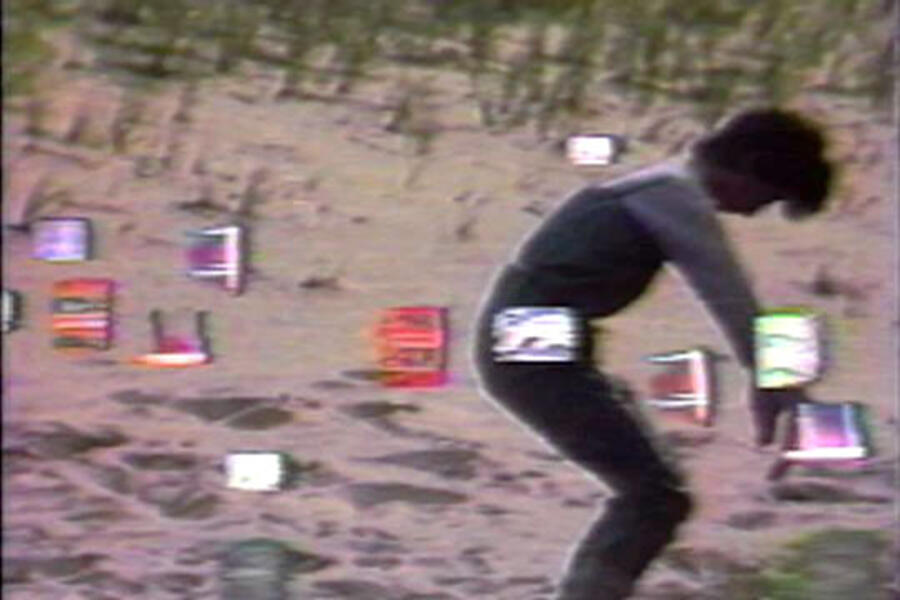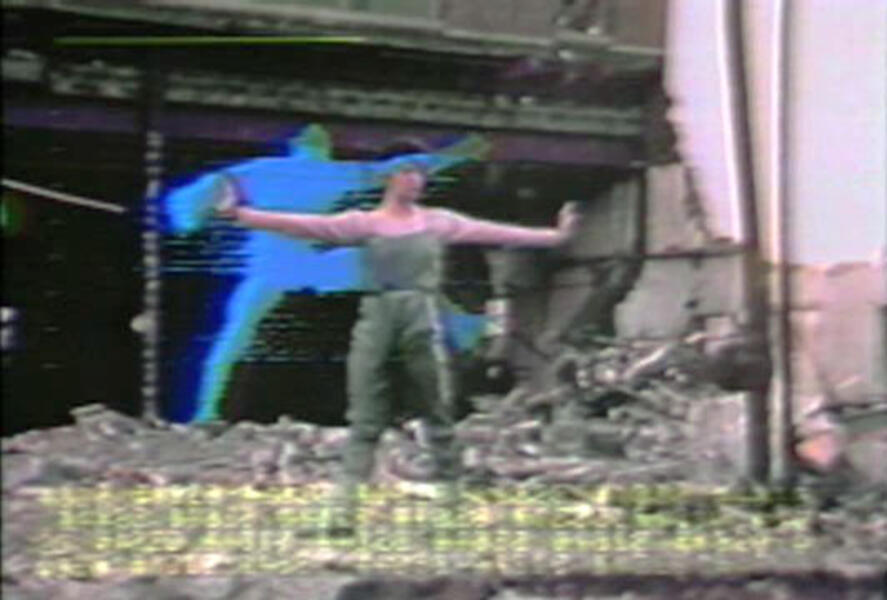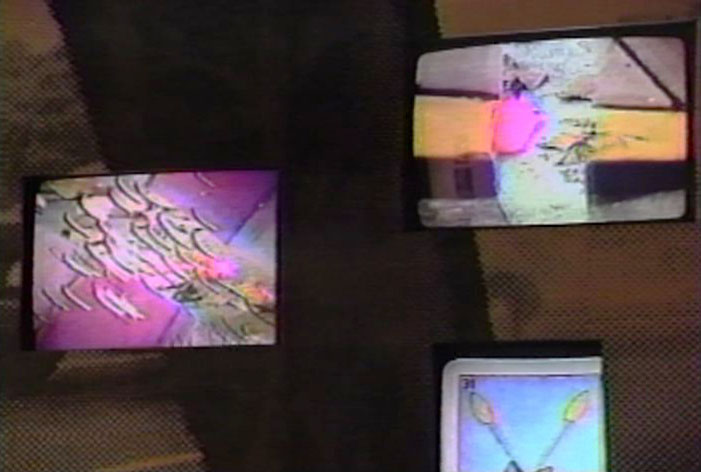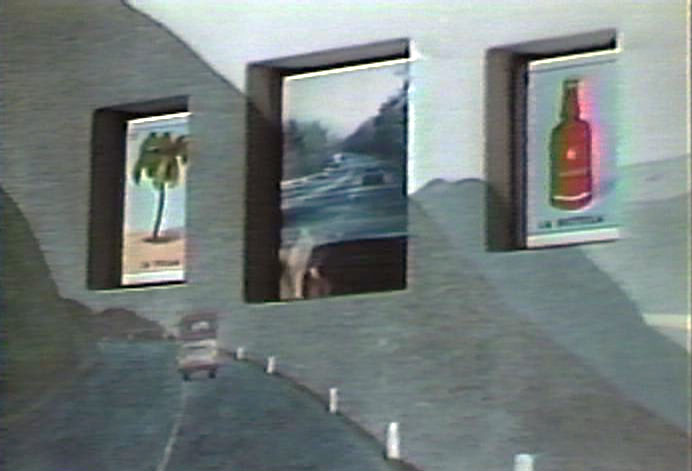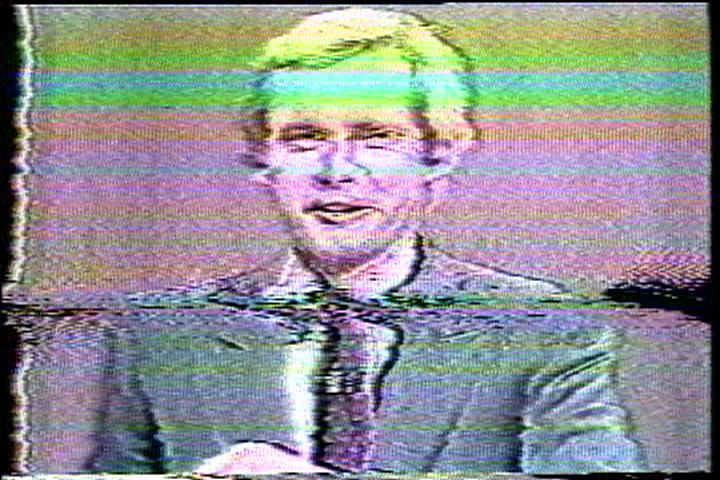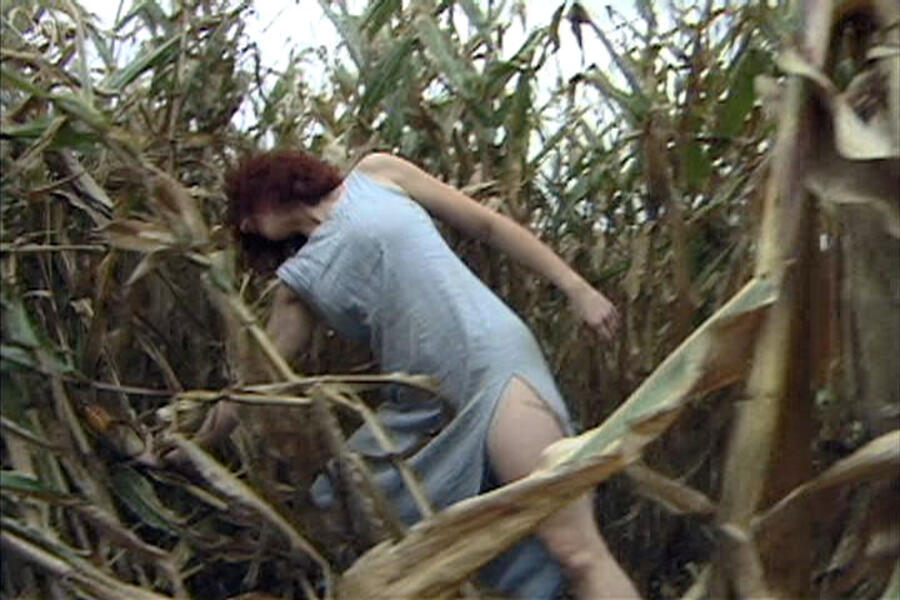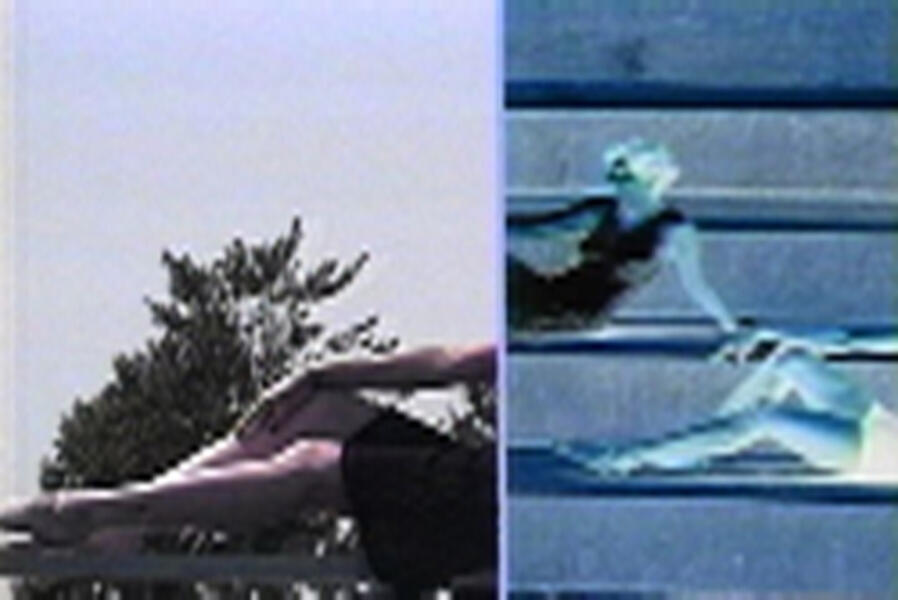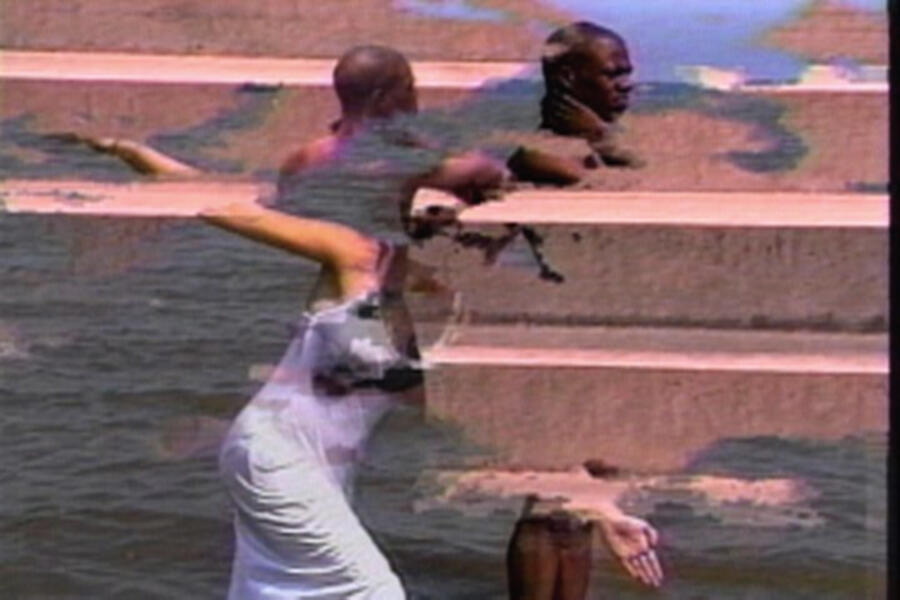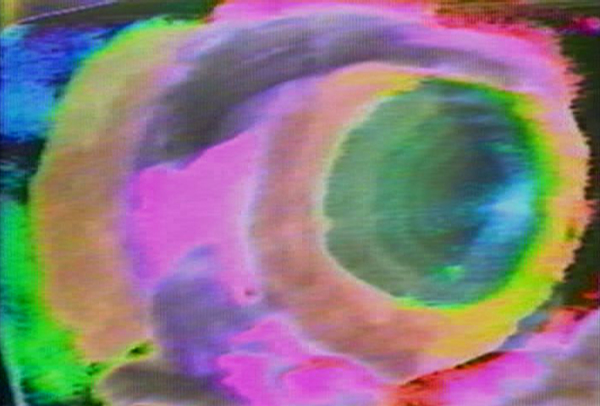About Vin
Howard County

I began painting 40 years ago, and I switched primarily to working in video about 30 years ago. While I often return to painting, I remain fascinated with the power and flexibility of the video medium. As it advances technologically, video continues to provide me with the means to "paint in time". The impact and quality of the still image is still very important to me, however, and I choose to display many still frames from my videos here in these project arrays.
I've been creating… more
I've been creating… more
Jump to a project:
Recent Video I: 2013-2019
I created “11 Time Paintings” by returning to shooting and editing techniques that I developed in earlier videos (“Barcelona Mosaics”, “Cicada Songs”, Mexico Painting”). I think of my video art as painting in time. “11 Time Paintings” presents a series of short visual music sketches produced utilizing a range of rhythmic editing techniques. The audio always originates with the original ambient sound recorded at the time the video was shot. My intent is to create a visceral effect where a distinct sound/image “brushstroke” occurs with each edit - no additional sound tracks are added. While abstract in a musical sense, vestiges of the locations where I shot my source footage remain, revealing references to Madrid traffic, Times Square, a jungle in Costa Rica, and other sites.
“Sky Buy” is an experimental video conceived as a dream collage. My intent was to arrange a set of images with all the logic and shifting pacing of a dreamscape. In the principal scenes, various artifacts of TV media are subjected to a forceful purifying water barrage. I collaborated with computer animator Francisco Olivares to create a waterspout sequence designed to overwhelm a series of abstracted scenes drawn from commercial media. A second animated water sequence depicts the flooding of the physical detritus of our media infrastructure. Additional footage includes night driving, two plazas in Madrid, a ringing ocean buoy, driving in a rainstorm, and an impromptu Klezmer band. Elliott Grabill provided principal sound/music sequences.
“Sky Buy” is an experimental video conceived as a dream collage. My intent was to arrange a set of images with all the logic and shifting pacing of a dreamscape. In the principal scenes, various artifacts of TV media are subjected to a forceful purifying water barrage. I collaborated with computer animator Francisco Olivares to create a waterspout sequence designed to overwhelm a series of abstracted scenes drawn from commercial media. A second animated water sequence depicts the flooding of the physical detritus of our media infrastructure. Additional footage includes night driving, two plazas in Madrid, a ringing ocean buoy, driving in a rainstorm, and an impromptu Klezmer band. Elliott Grabill provided principal sound/music sequences.
-
11 Time PaintingsI think of my video art as painting in time. “11 Time Paintings” presents a series of short visual music sketches produced utilizing a range of rhythmic editing techniques. The audio always originates with the original ambient sound recorded at the time the video was shot. My intent is to create a visceral effect where a distinct sound/image “brushstroke” occurs with each edit - no additional sound tracks are added. While abstract in a musical sense, vestiges of the locations where I shot my source footage remain, revealing references to Madrid traffic, Times Square, a jungle in Costa Rica, and other sites.
-
 11 Time Paintingsvideo still
11 Time Paintingsvideo still -
 11 Tiime Paintingsvideo still
11 Tiime Paintingsvideo still -
Sky Buy“Sky Buy” is an experimental video conceived as a dream collage. My intent was to arrange a set of images with all the logic and shifting pacing of a dreamscape. In the principal scenes, various artifacts of TV media are subjected to a forceful purifying water barrage. I collaborated with computer animator Francisco Olivares to create a waterspout sequence designed to overwhelm a series of abstracted scenes drawn from commercial media. A second animated water sequence depicts the flooding of the physical detritus of our media infrastructure. Additional footage includes night driving, two plazas in Madrid, an ocean buoy, driving in the rain, and a Klezmer band. Elliott Grabill provided principal sound/music sequences.
-
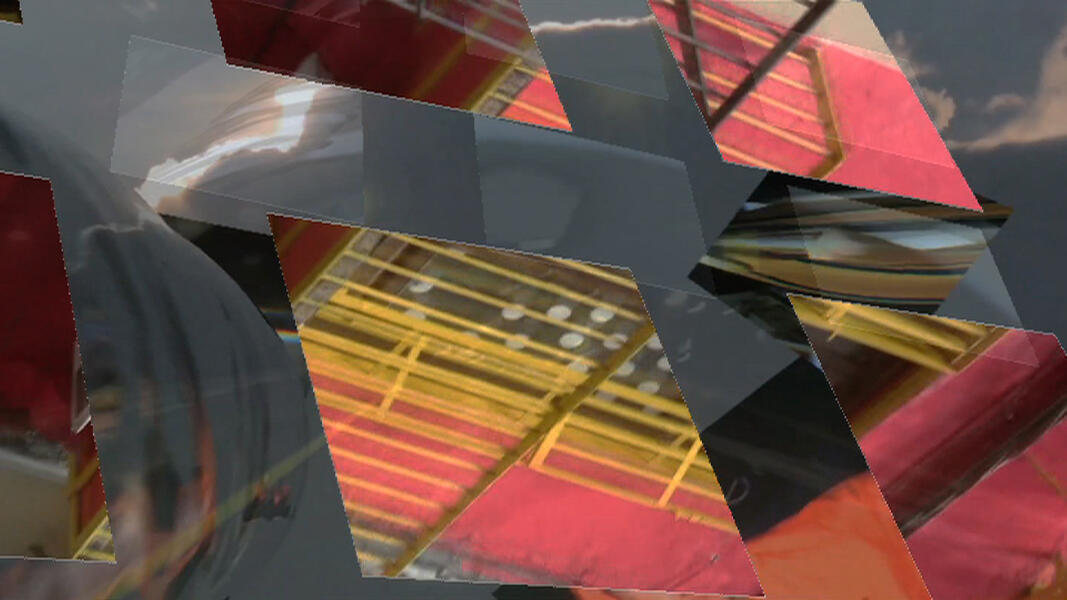 Sky Buyvideo still 2013
Sky Buyvideo still 2013 -
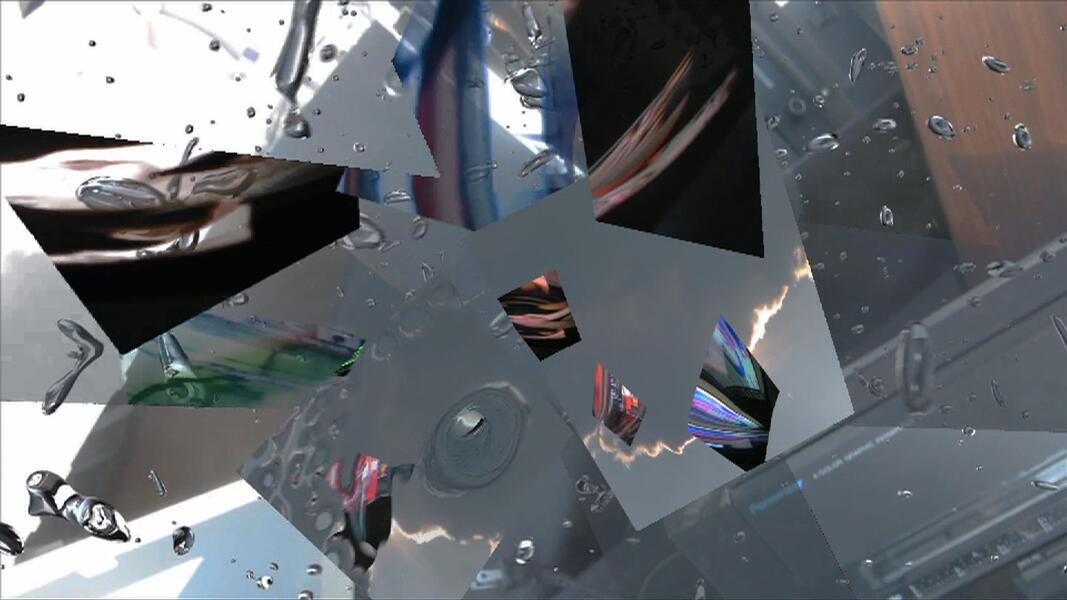 Sky Buyvideo still 2013
Sky Buyvideo still 2013 -
 Sky Buyvideo still 2013
Sky Buyvideo still 2013
Recent Video II: 2010-2012
These 5 video works represent a series of pieces I made from 2010-2012 that all utilize music composed by my son Elliott Grabill.
"Wet" is an experimental video conceived as a dream collage. In the principal scenes, various artifacts of TV media are subjected to a forceful purifying water barrage. I collaborated with computer animator Francisco Olivares to create a waterspout sequence designed to overwhelm a series of abstracted TV scenes. A second animated water sequence depicts the flooding of the physical detritus of our media infrastructure. Additional interludes depicting wetness round out the video?s visual episodes.
My intent for "Frontier" was to create a visually-rich abstract environment by blending together a wide assortment of video imagery, ranging from natural phenomena (water, sky, etc.), to rapidly-scanned street scenes, to manipulated faces shot off a television screen. Central to the visual field is a slowly moving window frame structure that allows these various visual sequences to be seen together, viewed both inside and outside the animated ?window? openings, allowing for an ongoing figure/ground play of contrasting imagery. While these image pairings play out, additional visual elements eventually course across the picture plane like storms, sometimes obscuring the window frame structure beneath. I collaborated with Elliott and also Argentinian composer Martin Gendelman. The predominant soundtrack element derives from Elliott?s composition for chorus, "Hathors", in which Elliott channels vocalizations from an extraterrestrial people.
"Frontier" was selected for the "Catalyst: 35 Years of Washington Project for the Arts" exhibition at the American University Museum at the Katzen Center, Washington, D.C. in 2010. It was also exhibited at the 2011 Maryland Film Festival and the Athens International Film & Video Festival. And "Frontier" was selected for the "Under Cover" exhibition at the Decker Gallery at MICA, a project of the Exhibition Development Seminar, January 27-March 11, 2012.
"Kings Highway / Stillwell Ave., Brooklyn" started as a piece of music for piano written by Elliott. It was inspired by Elliott's "feeling sad about leaving New York City to move to Washington, D.C." Elliott took inspiration for this piece "from a dreary day in February when, visiting Brooklyn, I felt that everything had gone on without me."
I made a video recording of Elliott playing "Kings Highway" at a performance in Washington, D.C. in October 2010. Elliott provided several hundred digital photos he had taken during his time in New York, and together, Elliott and I decided how to edit these images in and around the performance video footage. "Kings Highway" was selected as a finalist in the 2011 Rosebud Film & Video Awards Competition.
"After the Storms" is a recent video collaboration between Elliott and I that derives from a piece of music Elliott composed to serve as a soundtrack for a dance performance by choreographer Danielle Greene. The video was edited just after the hurricanes Irene and Lee, the storms referenced in the title, visited the mid-atlantic area.
"Pranayama, Part 3" is one of a four-part music/video work. I shot and edited the video that comprises the visual track for Elliott's musical composition "Pranayama". Elliott describes the process he used for developing his music:
"Pranayama" is my longest and most ambitious piece to date. I took the name from a type of meditative breathing - prana, in this case, represents life energy. Each of the four movements is centered around a single note: C, G, D, and A for movements I, II, III, and IV respectively. As each movement progresses, a profusion of other pitches and sounds begin to ornament the base notes."
While Elliott's music stands on its own, we decided to experiment with possible approaches to visualizing the music on the occasion of a concert Elliott had in October 2010 in Washington, D.C. The visual sequences derive from abstracted television images and water reflections, though most contextual associations have been removed by shooting the video through a large fabricated lens. The intent is to create images that focus primarily on various amorphous qualities of color, shape, and movement, thereby suggesting appropriate connections to the music.
"Pranayama 3" was exhibited at the International Computer Music Conference (ICMC) in Huddersfield, England, August 2011.
"Wet" is an experimental video conceived as a dream collage. In the principal scenes, various artifacts of TV media are subjected to a forceful purifying water barrage. I collaborated with computer animator Francisco Olivares to create a waterspout sequence designed to overwhelm a series of abstracted TV scenes. A second animated water sequence depicts the flooding of the physical detritus of our media infrastructure. Additional interludes depicting wetness round out the video?s visual episodes.
My intent for "Frontier" was to create a visually-rich abstract environment by blending together a wide assortment of video imagery, ranging from natural phenomena (water, sky, etc.), to rapidly-scanned street scenes, to manipulated faces shot off a television screen. Central to the visual field is a slowly moving window frame structure that allows these various visual sequences to be seen together, viewed both inside and outside the animated ?window? openings, allowing for an ongoing figure/ground play of contrasting imagery. While these image pairings play out, additional visual elements eventually course across the picture plane like storms, sometimes obscuring the window frame structure beneath. I collaborated with Elliott and also Argentinian composer Martin Gendelman. The predominant soundtrack element derives from Elliott?s composition for chorus, "Hathors", in which Elliott channels vocalizations from an extraterrestrial people.
"Frontier" was selected for the "Catalyst: 35 Years of Washington Project for the Arts" exhibition at the American University Museum at the Katzen Center, Washington, D.C. in 2010. It was also exhibited at the 2011 Maryland Film Festival and the Athens International Film & Video Festival. And "Frontier" was selected for the "Under Cover" exhibition at the Decker Gallery at MICA, a project of the Exhibition Development Seminar, January 27-March 11, 2012.
"Kings Highway / Stillwell Ave., Brooklyn" started as a piece of music for piano written by Elliott. It was inspired by Elliott's "feeling sad about leaving New York City to move to Washington, D.C." Elliott took inspiration for this piece "from a dreary day in February when, visiting Brooklyn, I felt that everything had gone on without me."
I made a video recording of Elliott playing "Kings Highway" at a performance in Washington, D.C. in October 2010. Elliott provided several hundred digital photos he had taken during his time in New York, and together, Elliott and I decided how to edit these images in and around the performance video footage. "Kings Highway" was selected as a finalist in the 2011 Rosebud Film & Video Awards Competition.
"After the Storms" is a recent video collaboration between Elliott and I that derives from a piece of music Elliott composed to serve as a soundtrack for a dance performance by choreographer Danielle Greene. The video was edited just after the hurricanes Irene and Lee, the storms referenced in the title, visited the mid-atlantic area.
"Pranayama, Part 3" is one of a four-part music/video work. I shot and edited the video that comprises the visual track for Elliott's musical composition "Pranayama". Elliott describes the process he used for developing his music:
"Pranayama" is my longest and most ambitious piece to date. I took the name from a type of meditative breathing - prana, in this case, represents life energy. Each of the four movements is centered around a single note: C, G, D, and A for movements I, II, III, and IV respectively. As each movement progresses, a profusion of other pitches and sounds begin to ornament the base notes."
While Elliott's music stands on its own, we decided to experiment with possible approaches to visualizing the music on the occasion of a concert Elliott had in October 2010 in Washington, D.C. The visual sequences derive from abstracted television images and water reflections, though most contextual associations have been removed by shooting the video through a large fabricated lens. The intent is to create images that focus primarily on various amorphous qualities of color, shape, and movement, thereby suggesting appropriate connections to the music.
"Pranayama 3" was exhibited at the International Computer Music Conference (ICMC) in Huddersfield, England, August 2011.
-
Frontiervideo, 2010
-
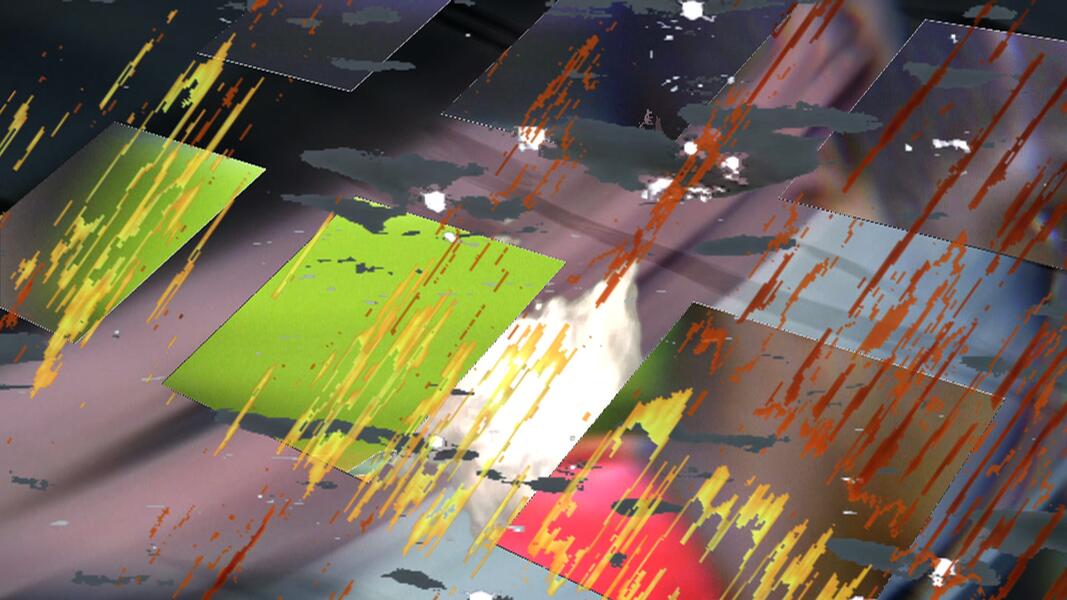 Storm Frames Istill image from video "Frontier" giclee print on canvas, 30" x 53" 2011
Storm Frames Istill image from video "Frontier" giclee print on canvas, 30" x 53" 2011 -
After the Stormsvideo, 2011
-
Kings Highway/Stillwell Ave., Brooklynvideo, 2010
-
Pranayama, Part 3video, 2010
-
Wetvideo 2012
-
 Wetvideo still 2012
Wetvideo still 2012 -
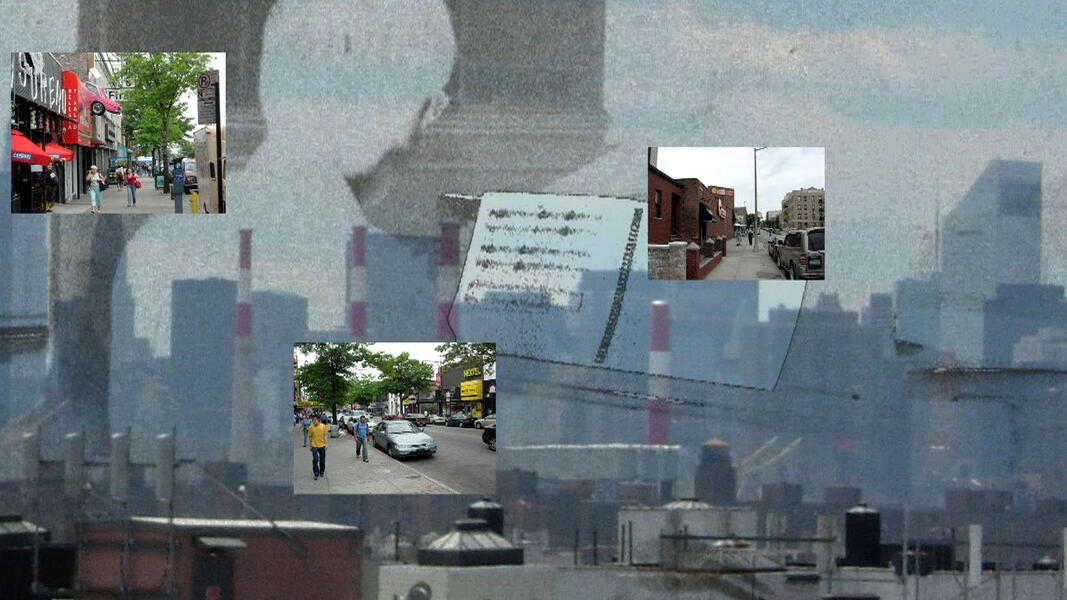 Kings Highway/Stillwell Ave., Brooklynvideo still 2011
Kings Highway/Stillwell Ave., Brooklynvideo still 2011 -
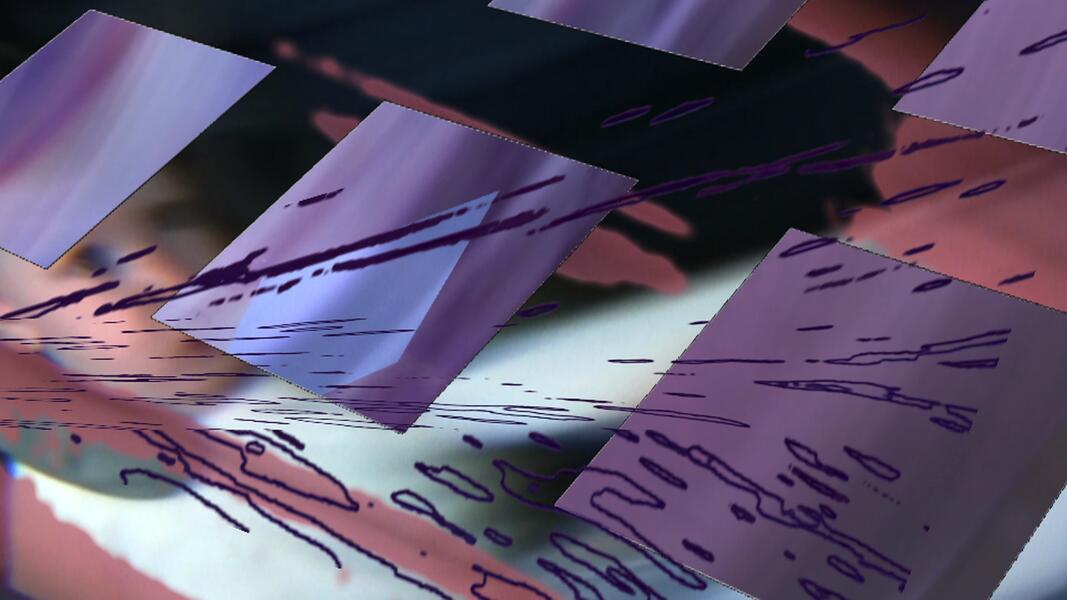 Directed Youthstill image from video "Frontier" giclee print on canvas, 30" x 53" 2011
Directed Youthstill image from video "Frontier" giclee print on canvas, 30" x 53" 2011 -
 Material Airstill image from video "Frontier" giclee print on canvas, 30" x 53" 2011
Material Airstill image from video "Frontier" giclee print on canvas, 30" x 53" 2011
Recent Video III: 2006-2010
"Barcelona Mosaics" represents an attempt to arrive at a series of rules that guided both the image gathering as well as the editing strategies I employed. I start by using all the raw, ambient audio that originally accompanied the video footage shot in the field, in this case, the existing sound from various locations I visited in Barcelona in 2008. And guiding my choice of the visual for this work, I decided to compose each and every camera shot to include a diagonal edge running between opposite corners of the frame. This strategy of reduction allowed me to interpret every scene in a consistent, though minimal manner. Certainly the result is not one that adequately provides a representation of any given location. Instead, I was more interested in arriving at some visual rules that would allow me to simplify and codify each shot made with the camera down to an elemental gesture, almost like a brushstroke. While the identity of the original sound and image characteristics of the various locations in which I shot are mostly disguised, my goal in this video was to create a series of "sound mosaics" that would represent the vibrancy of both the visual and aural landscapes of Barcelona.
In "Mexico Painting", I followed a similar approach to the one I employed when making "Barcelona Mosaics". The visual and audio imagery derives from footage I shot while on a trip to Mexico in 2006. As in "Barcelona Mosaics", each camera shot contains an edge or boundary that diagonally bisects the frame. All sound is that which accompanied the original visual footage - other than some slow motion manipulation at some points, the original sound is not altered in any way. Because most edits are very rapid, sound and visual material more closely resembles musical beats than representations of specific locations.
"Mexico Painting" was a Rosebud Film & Video Competition finalist in 2008 and was screened at the Maryland Film Festival in 2007. "Barcelona Mosaics" was selected for the Avant Garde Shorts program at the Maryland Film Festival in 2009.
Throughout the period I've been making video art, I've returned again and again to the notion that the video medium can provide me with the means to create a kind of "painting in time". For many years, I've been fascinated by the way various video editing techniques have allowed me to create musical compositions in a rhythmic sense. In the 80's, I utilized many types of analog editing facilities to create a body of work that I referred to as "visual music". I'm continuing to work in this vein, now utilizing a range of digital editing techniques to achieve the results that interest me.
"Cicada Songs, I-III" demonstrates my ongoing interest in rhythmic collage. As in earlier such works, I adamantly maintain a few ground rules related to the gathering of audio and visual material utilized in the final work: 1) there is no overdubbing of audio material; that is, all sounds heard are those originally recorded during video shooting; 2) no manipulations to either audio or visual material occurs during editing; that is, although sequences of video material are often re-scaled and layered together, I haven't altered the image or sound quality of any individual shot. In short, I am drawn to the idea of creating a kind of rhythmic collage by using all the raw, ambient audio that originally accompanied the visual footage I shot in the field. For this piece, I shot all source material the summer of 2004 during the cicada visitation to the Baltimore area. Their sound is present in all audio that I recorded in the field, and so I titled the piece accordingly.
"Cicada Songs I-III" was screened at the Maryland Film Festival in 2006.
In "Mexico Painting", I followed a similar approach to the one I employed when making "Barcelona Mosaics". The visual and audio imagery derives from footage I shot while on a trip to Mexico in 2006. As in "Barcelona Mosaics", each camera shot contains an edge or boundary that diagonally bisects the frame. All sound is that which accompanied the original visual footage - other than some slow motion manipulation at some points, the original sound is not altered in any way. Because most edits are very rapid, sound and visual material more closely resembles musical beats than representations of specific locations.
"Mexico Painting" was a Rosebud Film & Video Competition finalist in 2008 and was screened at the Maryland Film Festival in 2007. "Barcelona Mosaics" was selected for the Avant Garde Shorts program at the Maryland Film Festival in 2009.
Throughout the period I've been making video art, I've returned again and again to the notion that the video medium can provide me with the means to create a kind of "painting in time". For many years, I've been fascinated by the way various video editing techniques have allowed me to create musical compositions in a rhythmic sense. In the 80's, I utilized many types of analog editing facilities to create a body of work that I referred to as "visual music". I'm continuing to work in this vein, now utilizing a range of digital editing techniques to achieve the results that interest me.
"Cicada Songs, I-III" demonstrates my ongoing interest in rhythmic collage. As in earlier such works, I adamantly maintain a few ground rules related to the gathering of audio and visual material utilized in the final work: 1) there is no overdubbing of audio material; that is, all sounds heard are those originally recorded during video shooting; 2) no manipulations to either audio or visual material occurs during editing; that is, although sequences of video material are often re-scaled and layered together, I haven't altered the image or sound quality of any individual shot. In short, I am drawn to the idea of creating a kind of rhythmic collage by using all the raw, ambient audio that originally accompanied the visual footage I shot in the field. For this piece, I shot all source material the summer of 2004 during the cicada visitation to the Baltimore area. Their sound is present in all audio that I recorded in the field, and so I titled the piece accordingly.
"Cicada Songs I-III" was screened at the Maryland Film Festival in 2006.
Early video I: Forest Dream Code & Quantum Dream
Both of these video works, along with "Leaving the Ground", represent the kind of collage-based video art I was making in the late 80's and early 90's. In all three, I'm choosing to combine a range of different visual imagery along with musical sequences and performance elements in order to create essays built around specific themes.
"Forest Dream Code" is a 9-minute single-channel video that's based on an initial 2-screen video installation I created for the "Dada/Data" exhibition held jointly at the UMBC Center for Art & Visual Culture and Maryland Art Place in 1991. In this work, I blend forest and carnival scenes with quotations from Henry David Thoreau and Octavio Paz, along with music by Charles Ives, to evoke a sense of man's growing separation from nature.
I produced "Quantum Dream" in collaboration with musician/composer Mark Pierson and dance choreographer Betty Fain in 1986. The underlying content of the video was inspired by the movement to ban nuclear weapons which was quite active at this time. Lynne Carrachino dances in a "post-apocalyptic" world, and Mark Pierson's music evokes an occasionally hopeful, but generally mournful and somber tone in keeping with the anti-nuclear theme.
"Forest Dream Code" is a 9-minute single-channel video that's based on an initial 2-screen video installation I created for the "Dada/Data" exhibition held jointly at the UMBC Center for Art & Visual Culture and Maryland Art Place in 1991. In this work, I blend forest and carnival scenes with quotations from Henry David Thoreau and Octavio Paz, along with music by Charles Ives, to evoke a sense of man's growing separation from nature.
I produced "Quantum Dream" in collaboration with musician/composer Mark Pierson and dance choreographer Betty Fain in 1986. The underlying content of the video was inspired by the movement to ban nuclear weapons which was quite active at this time. Lynne Carrachino dances in a "post-apocalyptic" world, and Mark Pierson's music evokes an occasionally hopeful, but generally mournful and somber tone in keeping with the anti-nuclear theme.
Early Video II: Leaving The Ground & Driving in Mexico
"Leaving The Ground" was completed in 1988 following a one year's residence in central Mexico. The video depicts the notion of human flight both as an element found in certain Mexican rituals and as a universal impulse. Sequences of air-borne humans are juxtaposed against the "grounded" context of driving in a car. The viewer perceives dream and memory excerpts traveling across the picture plane (front windshield), and these images occasionally overwhelm the driver's view, allowing possibilities of thought/flight and dream/memory to momentarily dominate. The source footage for this video derives mostly from super 8 sound film.
"Leaving The Ground" received The Stuart Rome Prize as the "Best Maryland Work" entered in the 20th Annual Baltimore Independent Film and Video Makers Competition in 1989. It's been screened in numerous other festivals nationally.
In 1990, I expanded the approach I explored when making the video "Leaving the Ground" by constructing a video installation entitled "Driving in Mexico". The installation consists of 4 separate video tracks playing simultaneously over 8 TV monitors. The monitors are built into an 8' x 24' mural wall, with one small monitor set into the surface of a projector monitor.
To begin the entire process of this project, I worked on a series of paintings while I was living in Mexico. Then when I returned, I made the "Leaving the Ground" video and "Driving in Mexico" installation.
The paintings visualize the view of someone driving through various areas of Mexico. I built into the surface of these paintings a series of images - two Mexican lotteria cards and two lenticular photos depicting driving in the US. I wanted these images to representation the kind of distraction we sometimes have when driving - the way dream and memory can momentarily overtake our attention to driving.
"Leaving The Ground" received The Stuart Rome Prize as the "Best Maryland Work" entered in the 20th Annual Baltimore Independent Film and Video Makers Competition in 1989. It's been screened in numerous other festivals nationally.
In 1990, I expanded the approach I explored when making the video "Leaving the Ground" by constructing a video installation entitled "Driving in Mexico". The installation consists of 4 separate video tracks playing simultaneously over 8 TV monitors. The monitors are built into an 8' x 24' mural wall, with one small monitor set into the surface of a projector monitor.
To begin the entire process of this project, I worked on a series of paintings while I was living in Mexico. Then when I returned, I made the "Leaving the Ground" video and "Driving in Mexico" installation.
The paintings visualize the view of someone driving through various areas of Mexico. I built into the surface of these paintings a series of images - two Mexican lotteria cards and two lenticular photos depicting driving in the US. I wanted these images to representation the kind of distraction we sometimes have when driving - the way dream and memory can momentarily overtake our attention to driving.
-
Leaving The Groundvideo, 1988
-
 "Leaving the Ground: 3rd Dream - Taking Flight"video still
"Leaving the Ground: 3rd Dream - Taking Flight"video still -
Driving in Mexico: A Video Muralvideo documentation of video installation, 1992
-
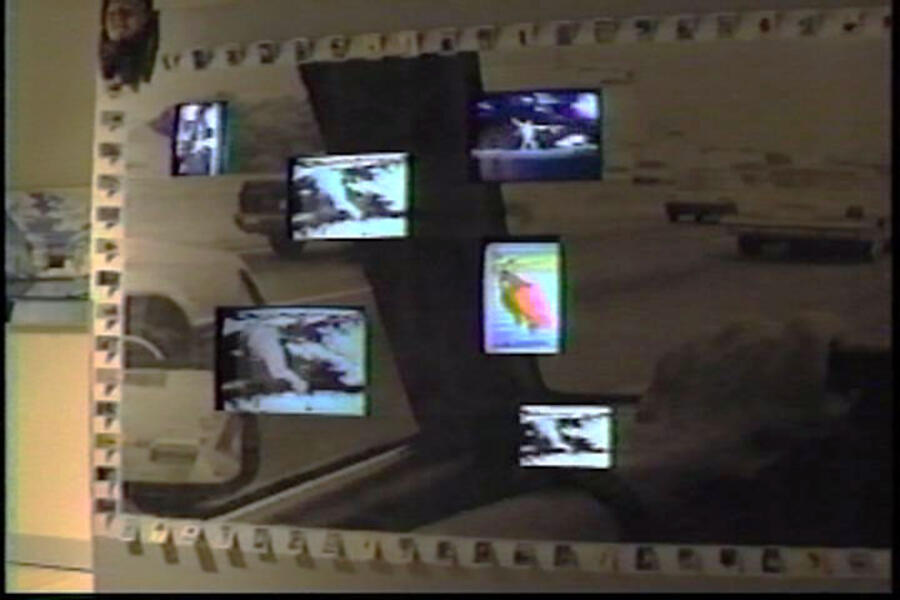 "Driving in Mexico: A Video Mural", 1990video still of documentary
"Driving in Mexico: A Video Mural", 1990video still of documentary -
 "Driving in Mexico: A Video Mural", 1990video still of documentary
"Driving in Mexico: A Video Mural", 1990video still of documentary -
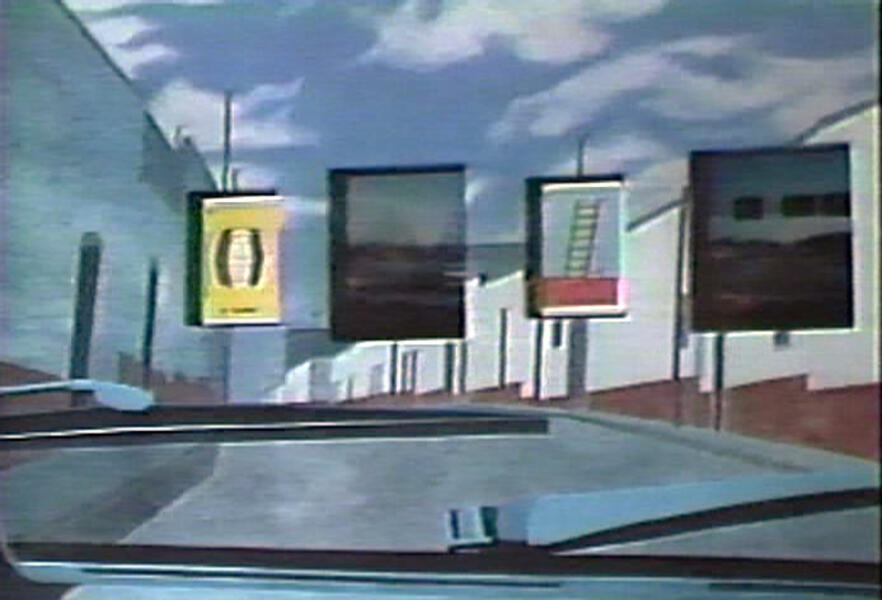 Driving in Mexico paintings, 1986video still of documentary
Driving in Mexico paintings, 1986video still of documentary -
Driving in Mexico paintingsvideo documentation of "Driving in Mexico" paintings on canvas, 1990
-
 Driving in Mexico paintings, 1986video still of documentary
Driving in Mexico paintings, 1986video still of documentary -
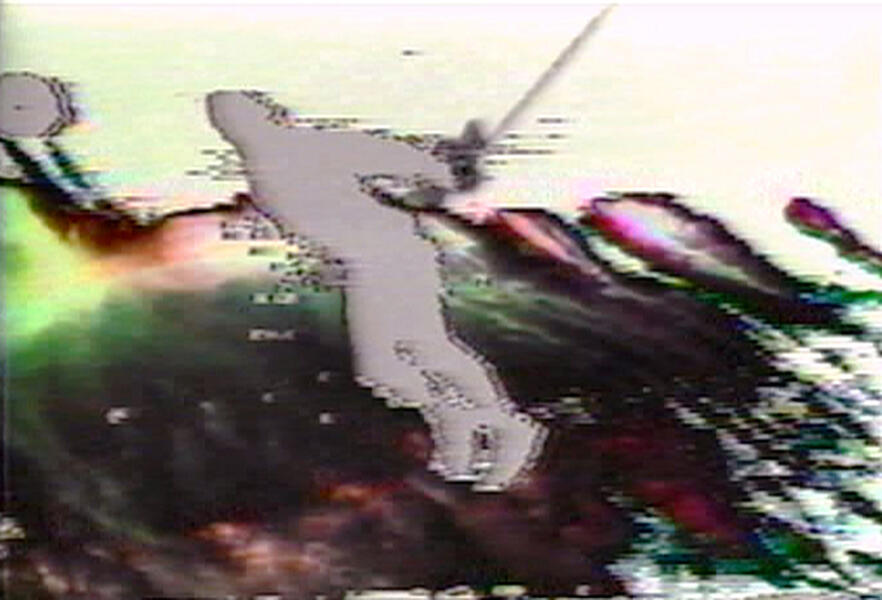 "Leaving the Ground: 3rd Dream - Taking Flight""video still
"Leaving the Ground: 3rd Dream - Taking Flight""video still
Early Video III: 8 Short Processes & Homage to the End of Analog TV: 8 Short Processes
"8 Short Processes" is a series of short video works I made in the early 1980's that focused on specific editing techniques that were available at the time. Of course, each of these sketches was produced using analog video editing equipment, and though somewhat limiting compared to today's digital editing capabilities, I still thrived on the great flexibility the medium afforded me at the time. When working on these short videos, I became fascinated by the possibilities of chroma keying ("Joy Ride" and "Water Painting"), and I began experimenting with rapid editing techniques to achieve various kinds of rhythmic phrasing ("Fiandaca"). I also began taking advantage of accidental imagery that came about when shooting and editing ("Car Song"), including a deteriorated video signal ("Energy").
Most of all, what unifies these works is my interest in found sound. I adamantly hold on to all the ambient sound that accompanies the visual element when shooting my video, and, at this time, my interest was in creating collage-like visually musical compositions, which I began referring to as "painting in time". It's this early phase of my videomaking career that strongly influenced the approach I take in some of my most recent works, such as "Cicada Songs", "Mexico Painting", and "Barcelona Mosaics".
Most of all, what unifies these works is my interest in found sound. I adamantly hold on to all the ambient sound that accompanies the visual element when shooting my video, and, at this time, my interest was in creating collage-like visually musical compositions, which I began referring to as "painting in time". It's this early phase of my videomaking career that strongly influenced the approach I take in some of my most recent works, such as "Cicada Songs", "Mexico Painting", and "Barcelona Mosaics".
-
Joy Ridevideo, 1980
-
Fiandacavideo, 1981
-
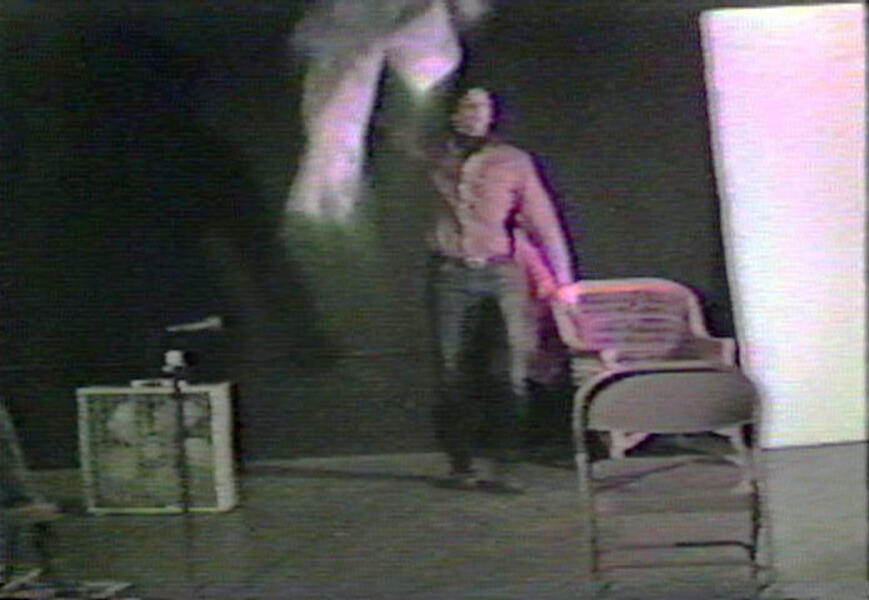 8sp-4.fiandaca-a
8sp-4.fiandaca-a -
 Energy"Energy" demonstrates the effects of analog video editing, specifically the deterioration that occurs to the image when a short video clip is edited back and forth between two tapes 28 times.
Energy"Energy" demonstrates the effects of analog video editing, specifically the deterioration that occurs to the image when a short video clip is edited back and forth between two tapes 28 times. -
Car Songvideo, 1980
-
Water Paintingvideo, 1992 One sequence of rhythmically edited video is superimposed into the shadow of a large rock in the water, and another sequence is superimposed into the water surrounding the rock's shadow.
-
Welk Womenvideo, 1981 I shot the "Lawrence Welk" television show through a large lens and edited sound and visual together to create this alternative Welk Women music video.
-
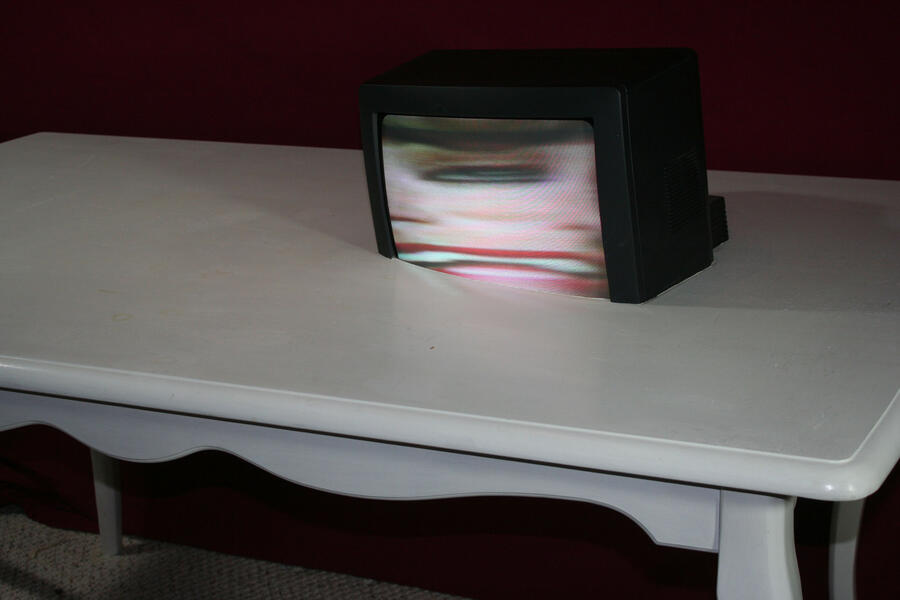 "Homage to the End of Analog TV: 8 Short Processes"Detail of video installation "Homage to the End of Analog TV: 8 Short Processes". Video monitor playing "8 Short Processes" sunk into surface of table, "Dead Air" video art exhibition, Metro Gallery, Baltimore, MD, February 17-March 22, 2009
"Homage to the End of Analog TV: 8 Short Processes"Detail of video installation "Homage to the End of Analog TV: 8 Short Processes". Video monitor playing "8 Short Processes" sunk into surface of table, "Dead Air" video art exhibition, Metro Gallery, Baltimore, MD, February 17-March 22, 2009 -
Crestvideo, 1980 I edited together several takes of my speaking the Crest slogan, each with a slight shift in head position.
-
Energyvideo, 1980 a study of deteriorating video signal. What technical process do I use to create this gradation of descending deterioration?
Collaborations II: Carol Hess
Carol Hess choreographed "Private Property", a dance work for performance and live video, seen here in a 1995 performance at UMBC. Pamela Matthews dances, and I perform as a male performer who surveys her movements closely with a video camera. A screen on stage displays the camera's output as the camera operator becomes more and more of an intrusive presence to the dancer. At first merely watching the dancer with my camera, I later attempt to capture her essence by using the camera's freeze frame and wipe capabilities while roaming the stage.
I produced this document of "Private Property" by combining the output of the performer's camera with video from a 2nd camera positioned near the front of the stage.
A piano work by Stuart Saunders Smith, played by Tom Moore, serves as a musical accompaniment to the performance.
"Shibboleth" is a video dance work produced in collaboration with Carol Hess over a six-month period in 1999. Our intent was to portray dancer Emily Giza in relationship with the emergence of the corn harvest - from the dry, bare earth, through the lush, leafy fullness of growth, to withered, crackling stalks at the end of the cycle. Through the cooperation of the University of Maryland College Park (UMCP) Experimental Agricultural Station in Clarksville, MD, we were able to gain extended access to several corn fields under their care, thereby allowing our plan to take shape.
What we didn't count on when trying to shoot our footage was the degree to which our progress was affected by a severe drought that year. Although the corn was slow to emerge, it did miraculously grow, due, I'm certain, to the expertise of our UMCP friends. The fact that the ground was eternally dry and dusty throughout the growing season, however, added to the visual quality of our footage.
Sylvia Smith contributed greatly to the soundtrack by providing "She", a speechsong that she composed and performed. Sylvia graciously allowed us to integrate her composition into the final edited video.
A few years earlier, I collaborated with Carol on "Changing Room", a 12-minute video in 1995. Neal Woodson provided a wide range of sound material which I edited and overlayed in various ways, to accompany the visual sequences. Carol and I recorded dancers Emily Giza and Eric Jenkins in several indoor and outdoor locations around Maryland. Using rhythmic editing and overlay strategies, our intent was to present a dance work in a way that would not be possible in a live performance.
I produced this document of "Private Property" by combining the output of the performer's camera with video from a 2nd camera positioned near the front of the stage.
A piano work by Stuart Saunders Smith, played by Tom Moore, serves as a musical accompaniment to the performance.
"Shibboleth" is a video dance work produced in collaboration with Carol Hess over a six-month period in 1999. Our intent was to portray dancer Emily Giza in relationship with the emergence of the corn harvest - from the dry, bare earth, through the lush, leafy fullness of growth, to withered, crackling stalks at the end of the cycle. Through the cooperation of the University of Maryland College Park (UMCP) Experimental Agricultural Station in Clarksville, MD, we were able to gain extended access to several corn fields under their care, thereby allowing our plan to take shape.
What we didn't count on when trying to shoot our footage was the degree to which our progress was affected by a severe drought that year. Although the corn was slow to emerge, it did miraculously grow, due, I'm certain, to the expertise of our UMCP friends. The fact that the ground was eternally dry and dusty throughout the growing season, however, added to the visual quality of our footage.
Sylvia Smith contributed greatly to the soundtrack by providing "She", a speechsong that she composed and performed. Sylvia graciously allowed us to integrate her composition into the final edited video.
A few years earlier, I collaborated with Carol on "Changing Room", a 12-minute video in 1995. Neal Woodson provided a wide range of sound material which I edited and overlayed in various ways, to accompany the visual sequences. Carol and I recorded dancers Emily Giza and Eric Jenkins in several indoor and outdoor locations around Maryland. Using rhythmic editing and overlay strategies, our intent was to present a dance work in a way that would not be possible in a live performance.
Collaborations III: Elizabeth Goldring
The first clip in this project array is a 21-minute experimental video documentary I produced in collaboration with poet Elizabeth Goldring. Our intent was to portray some of the day-to-day experiences Elizabeth faces as she copes with deteriorating vision loss due to diabetic retinopathy. Elizabeth described to me the visual artifacts and effects she experienced in various settings, and I attempted to simulate these effects using various video techniques.
In this excerpt, we portray several everyday scenes in Elizabeth's life - walking through a building at M.I.T. (where Elizabeth works), crossing the street, experiencing a laser treatment session, walking again in bright sunlight, and reading with the help of a large print computer device. All scenes are accompanied by excerpts of Elizabeth's poems and journal entries, spoken by Elizabeth.
In addition, once the 21-minute video was produced, Elizabeth and I created an interactive video installation inspired by the video, "EYE/SIGHT", featuring a live camera and two-channel (one small screen set into a larger screen) video display. When a viewer sat in an "examination" chair, he/she was able to peer into a camera lens that was set to insert a close-up image of a his/her eye into the video mix. The inner video screen showed edited footage of Elizabeth's diagnostic eye exams, and the outer video screen showed video footage of retinal images until a viewer sat in the chair, at which point the outer screen switched to a live video image of the viewer's own eye. Audio from the diagnostic footage is projected into the space, but when a viewer puts on a set of available headphones, the ambient audio is muted, and the voice of Elizabeth speaking poems from her Eye Journals can be heard.
"EYE/SIGHT" was exhibited in the 1990 "Options" show at the Washington Project for the Arts (WPA), as well as in exhibitions in New York and Germany. "The Inner Eye: From The Inside Out" has been exhibited in numerous exhibitions in this country and Europe.
Included in this project array are 5 excerpts of simulated views of the 2-screen array that was the basis of the installation. As the last entry, a short video documents how a viewer interacts with the installation.
In this excerpt, we portray several everyday scenes in Elizabeth's life - walking through a building at M.I.T. (where Elizabeth works), crossing the street, experiencing a laser treatment session, walking again in bright sunlight, and reading with the help of a large print computer device. All scenes are accompanied by excerpts of Elizabeth's poems and journal entries, spoken by Elizabeth.
In addition, once the 21-minute video was produced, Elizabeth and I created an interactive video installation inspired by the video, "EYE/SIGHT", featuring a live camera and two-channel (one small screen set into a larger screen) video display. When a viewer sat in an "examination" chair, he/she was able to peer into a camera lens that was set to insert a close-up image of a his/her eye into the video mix. The inner video screen showed edited footage of Elizabeth's diagnostic eye exams, and the outer video screen showed video footage of retinal images until a viewer sat in the chair, at which point the outer screen switched to a live video image of the viewer's own eye. Audio from the diagnostic footage is projected into the space, but when a viewer puts on a set of available headphones, the ambient audio is muted, and the voice of Elizabeth speaking poems from her Eye Journals can be heard.
"EYE/SIGHT" was exhibited in the 1990 "Options" show at the Washington Project for the Arts (WPA), as well as in exhibitions in New York and Germany. "The Inner Eye: From The Inside Out" has been exhibited in numerous exhibitions in this country and Europe.
Included in this project array are 5 excerpts of simulated views of the 2-screen array that was the basis of the installation. As the last entry, a short video documents how a viewer interacts with the installation.
-
The Inner Eye: From The Inside Out1988
-
 "The Inner Eye: From The Inside Out"video still
"The Inner Eye: From The Inside Out"video still -
EYE/SIGHT installationvideo documentation of "EYE/SIGHT" installation, 1990
-
EYE/SIGHT, excerpt 5excerpt of digital simulation of video installation 1990
-
EYE/SIGHT, excerpt 4excerpt of digital simulation of video installation 1990
-
EYE/SIGHT, except 3excerpt of digital simulation of video installation 1990
-
EYE/SIGHT, excerpt 2excerpt of digital simulation of video installation 1990
-
EYE/SIGHT, excerpt 1excerpt of digital simulation of video installation 1990
-
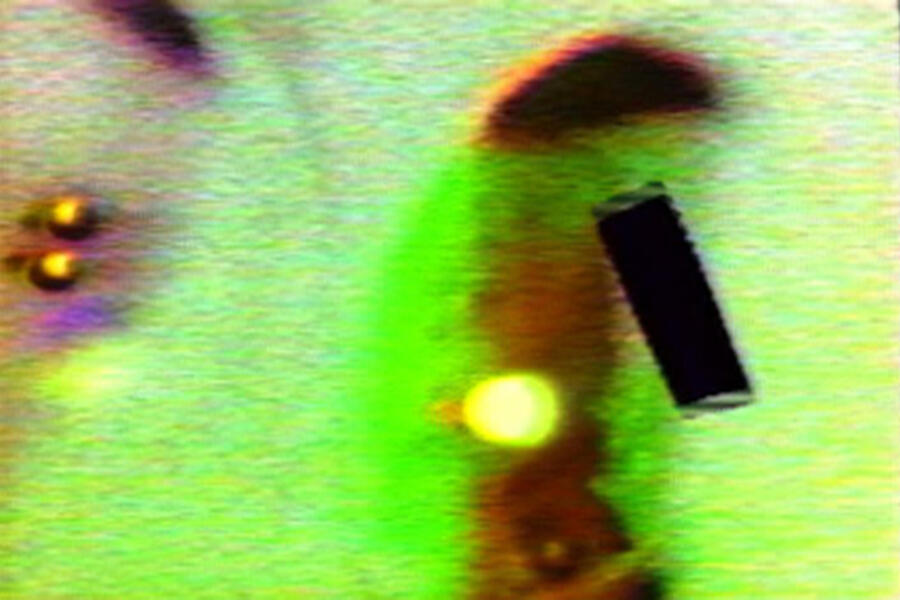 "The Inner Eye: From The Inside Out"video still
"The Inner Eye: From The Inside Out"video still
Giclee Prints on Canvas I
New and improved devices allow media images to intrude into our lives at all times, re-defining our landscape as a result. Various artifacts of media imagery make up the way we view the world, often replacing nature. Swirling bits of data clog and complicate our perceptions - ads shout urgent pleas, jogging and redefining our understanding of the real and virtual spaces in which we live.
Over the past few years, I’ve been working in both digital still and video media to reflect these concerns. The series of images presented here is closely related to a video I made in 2010, “Frontier”. These prints each juxtapose images sourced from television media and other scenes via the same kind of figure/ground grid structure I used for “Frontier”. For “Talking Heads I”, “TV Nation”, and “Sky Buy”, I shot live television footage through a large lens placed in front of a TV screen and then used digital mixing techniques to combine disparate swatches of the abstracted media imagery.
“Verge” and “Vigilance” juxtapose the lens-manipulated TV footage against the backdrops of shopping mall parking lots. While the TV media images have been stretched, the parking lot shots have not been manipulated in any way.
Over the past few years, I’ve been working in both digital still and video media to reflect these concerns. The series of images presented here is closely related to a video I made in 2010, “Frontier”. These prints each juxtapose images sourced from television media and other scenes via the same kind of figure/ground grid structure I used for “Frontier”. For “Talking Heads I”, “TV Nation”, and “Sky Buy”, I shot live television footage through a large lens placed in front of a TV screen and then used digital mixing techniques to combine disparate swatches of the abstracted media imagery.
“Verge” and “Vigilance” juxtapose the lens-manipulated TV footage against the backdrops of shopping mall parking lots. While the TV media images have been stretched, the parking lot shots have not been manipulated in any way.
-
 TV Nationgiclee print on canvas, 24" x 36" 2012
TV Nationgiclee print on canvas, 24" x 36" 2012 -
 Talking Heads Igiclee print on canvas, 24" x 36" 2012
Talking Heads Igiclee print on canvas, 24" x 36" 2012 -
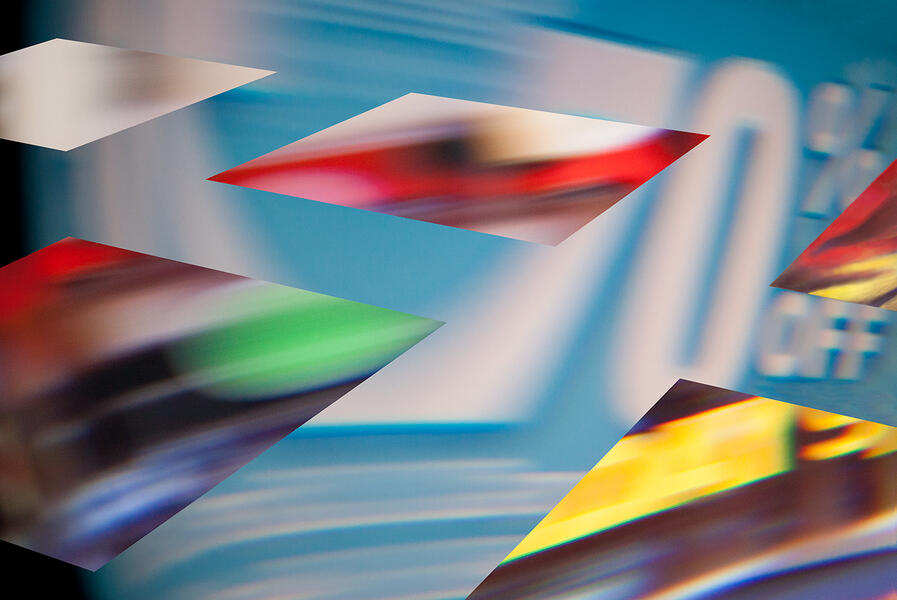 Sky Buygiclee print on canvas, 24" x 36" 2013
Sky Buygiclee print on canvas, 24" x 36" 2013 -
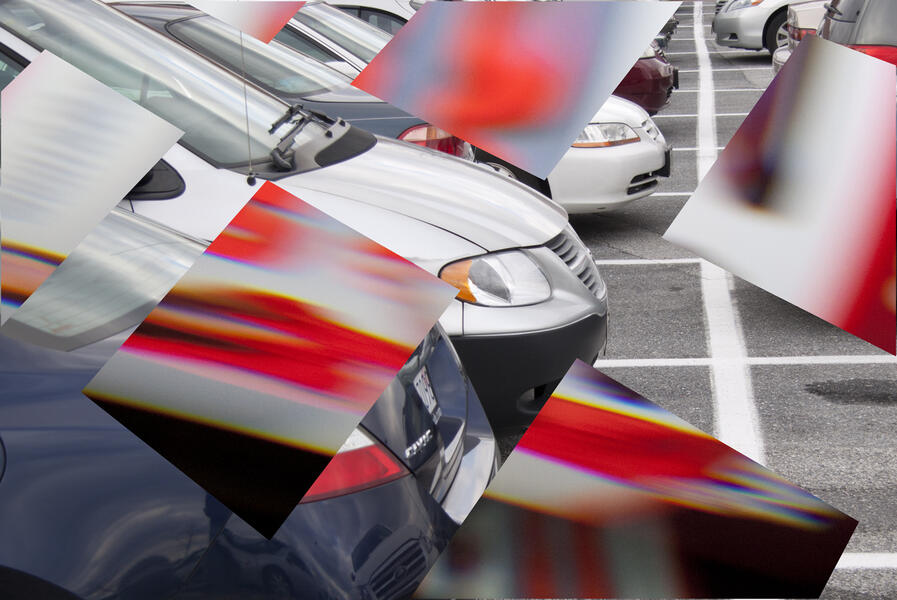 Vergegiclee print on canvas, 24" x 36" 2012 (selected for "Pop Effects" exhibition, Cade Center for Fine Arts Gallery, AACC, Arnold, MD, Jan. 28-Feb. 21, 2013)
Vergegiclee print on canvas, 24" x 36" 2012 (selected for "Pop Effects" exhibition, Cade Center for Fine Arts Gallery, AACC, Arnold, MD, Jan. 28-Feb. 21, 2013) -
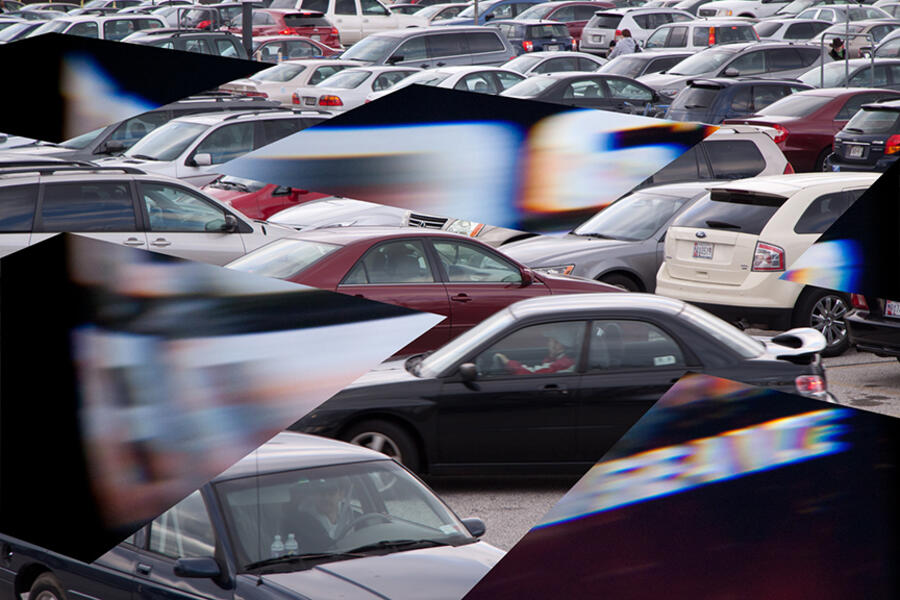 Ghost Ridersgiclee print on canvas, 24" x 36" 2012
Ghost Ridersgiclee print on canvas, 24" x 36" 2012 -
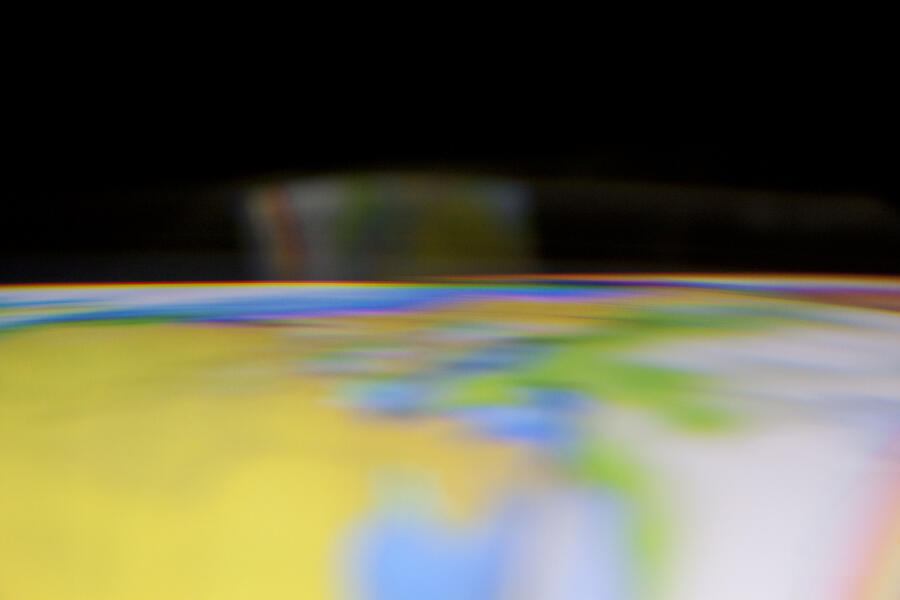 Encountergiclee print on canvas, 30" x 50" 2012
Encountergiclee print on canvas, 30" x 50" 2012 -
 Televibes Igiclee print on canvas, 24" x 36" 2012
Televibes Igiclee print on canvas, 24" x 36" 2012 -
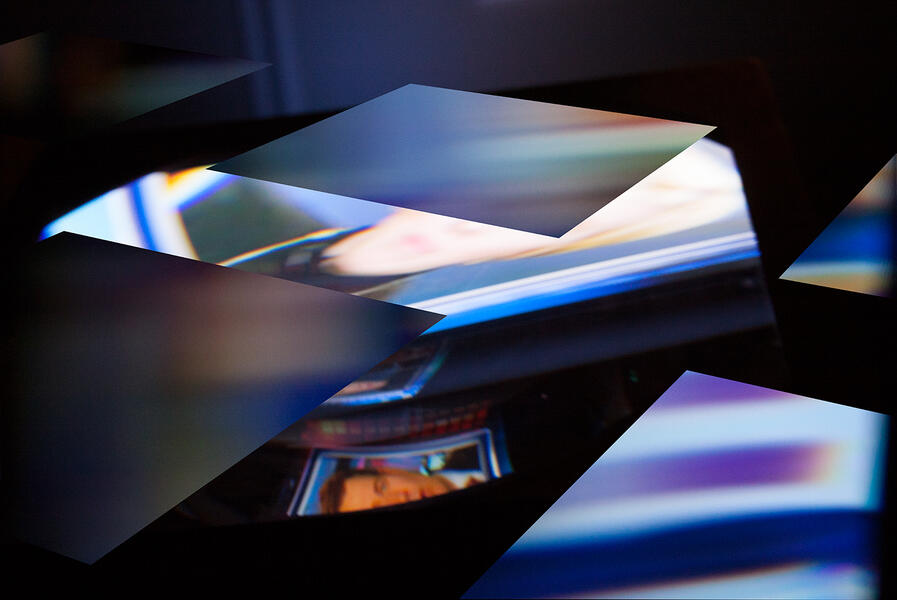 Channels IIgiclee print on canvas, 24" x 36" 2012
Channels IIgiclee print on canvas, 24" x 36" 2012 -
 Channels Igiclee print on canvas, 24" x 36" 2012
Channels Igiclee print on canvas, 24" x 36" 2012
Giclee Prints on Canvas II
(See Project Overview "Giclee Prints on Canvas I)
-
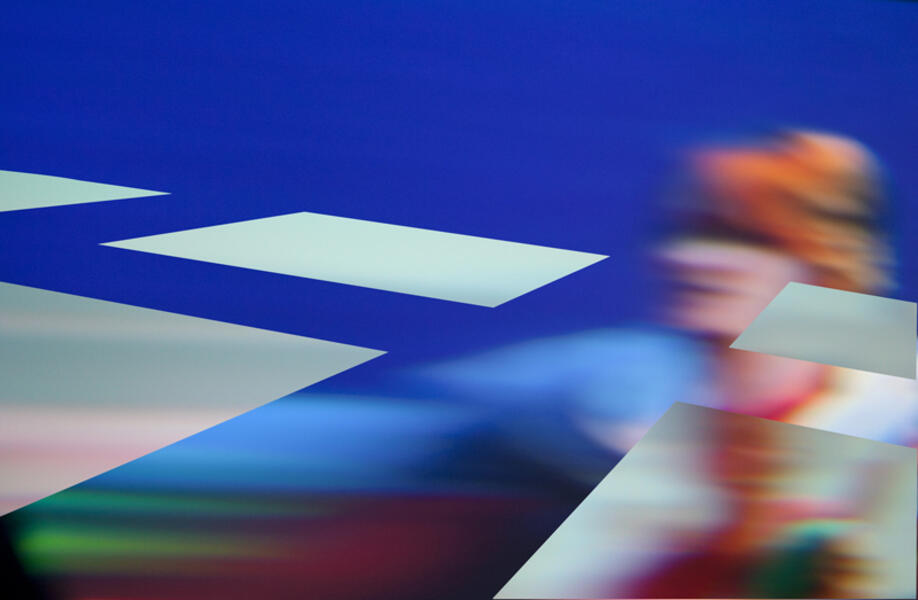 Black Friday IIgiclee print on canvas, 16" x 24" 2011
Black Friday IIgiclee print on canvas, 16" x 24" 2011 -
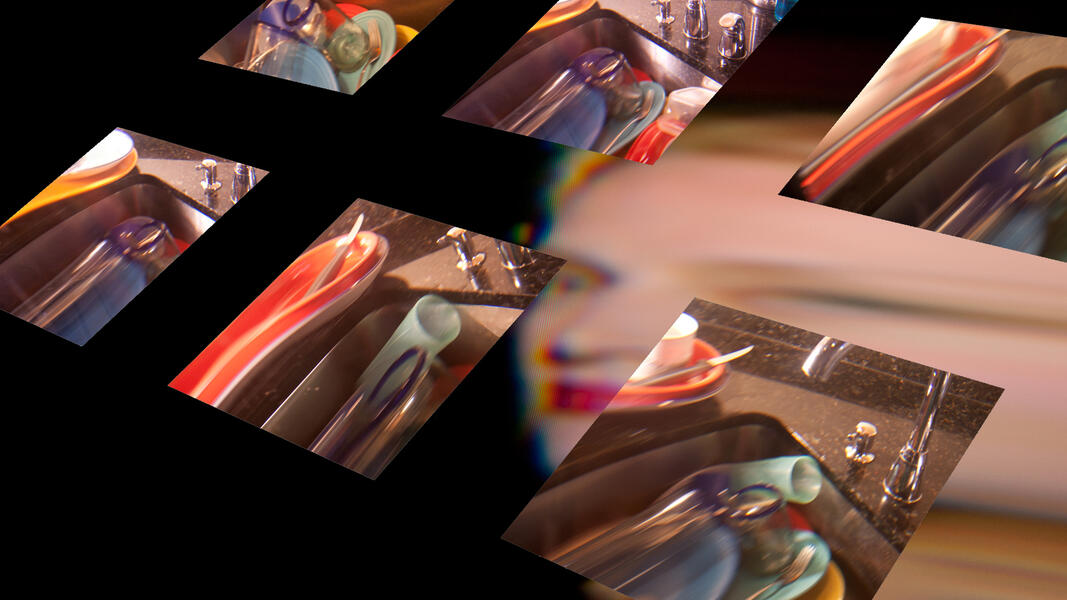 Dishesgiclee print on canvas, 24" x 36" 2012
Dishesgiclee print on canvas, 24" x 36" 2012 -
 Shoppers' Worldgiclee print on canvas, 16" x 24" 2012
Shoppers' Worldgiclee print on canvas, 16" x 24" 2012 -
 Spirits of the Mallgiclee print on canvas, 16" x 24" 2012
Spirits of the Mallgiclee print on canvas, 16" x 24" 2012 -
 Vigilancegiclee print on canvas, 16" x 24" 2011
Vigilancegiclee print on canvas, 16" x 24" 2011 -
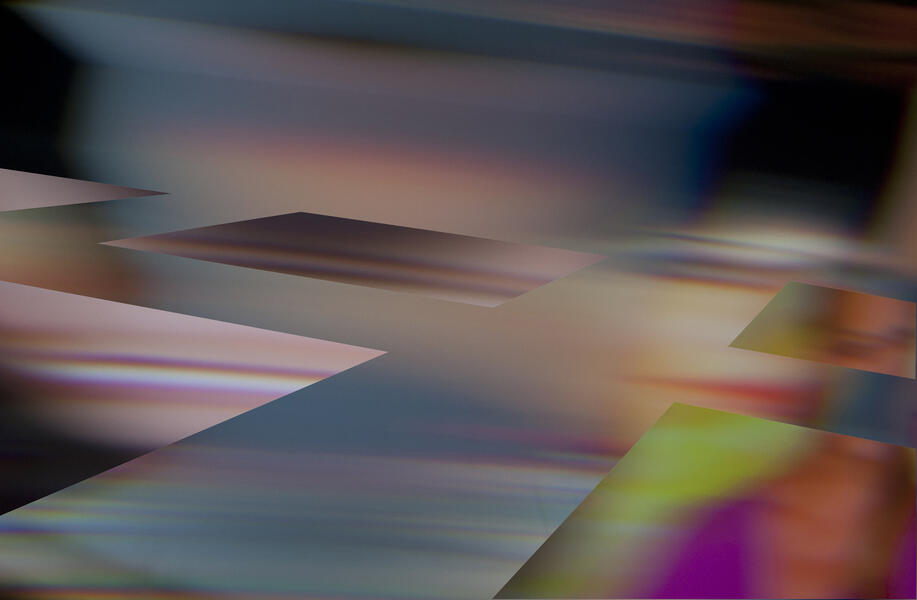 Black Friday 1giclee print on canvas, 16" x 24" 2011
Black Friday 1giclee print on canvas, 16" x 24" 2011 -
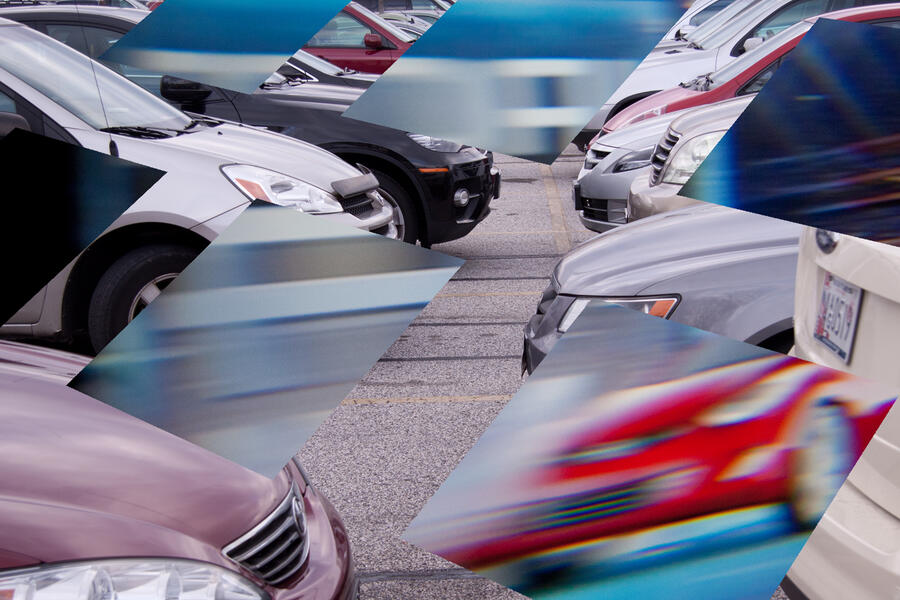 Surgegiclee print on canvas, 24" x 36" 2012
Surgegiclee print on canvas, 24" x 36" 2012 -
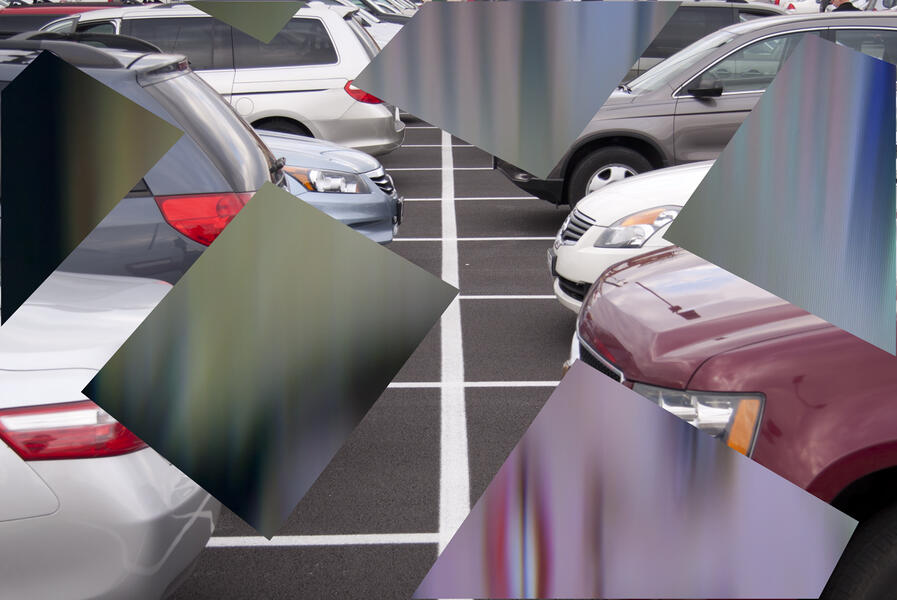 Commercial Messagegiclee print on canvas, 24" x 36" 2012
Commercial Messagegiclee print on canvas, 24" x 36" 2012


